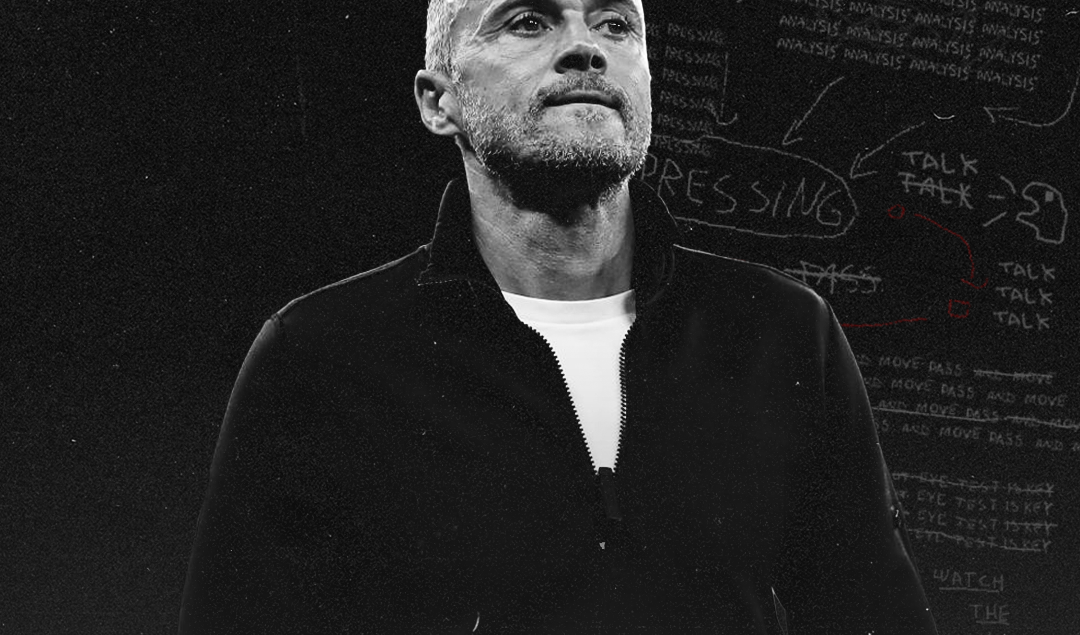How Morocco Condemned Spain to a Second Straight Penalty Shootout Elimination in the Round of 16
Morocco continues to make history in Qatar 2022 and take out Spain from the Round of 16 in the World Cup and qualifies for the next round against Portugal, a match that was complicated for both teams, a penalty shoot-out was resorted to determine the winner and here Bono was the national champion of Morocco and brings the victory.
Let’s focus on the most important phase, how Walid Regragui tried to stop Spain, and on the other hand, how Luis Enrique tried to overcome Morocco’s defensive structure, especially their mid-block. We start with Morocco’s 4-3-3 which turns into a 4-1-4-1 in a medium block and a 4-5-1 in a low block. Spain starts the usual 4-3-3 formation only for Marcos Llorente to start as a right-back against Sofiane Boufal.
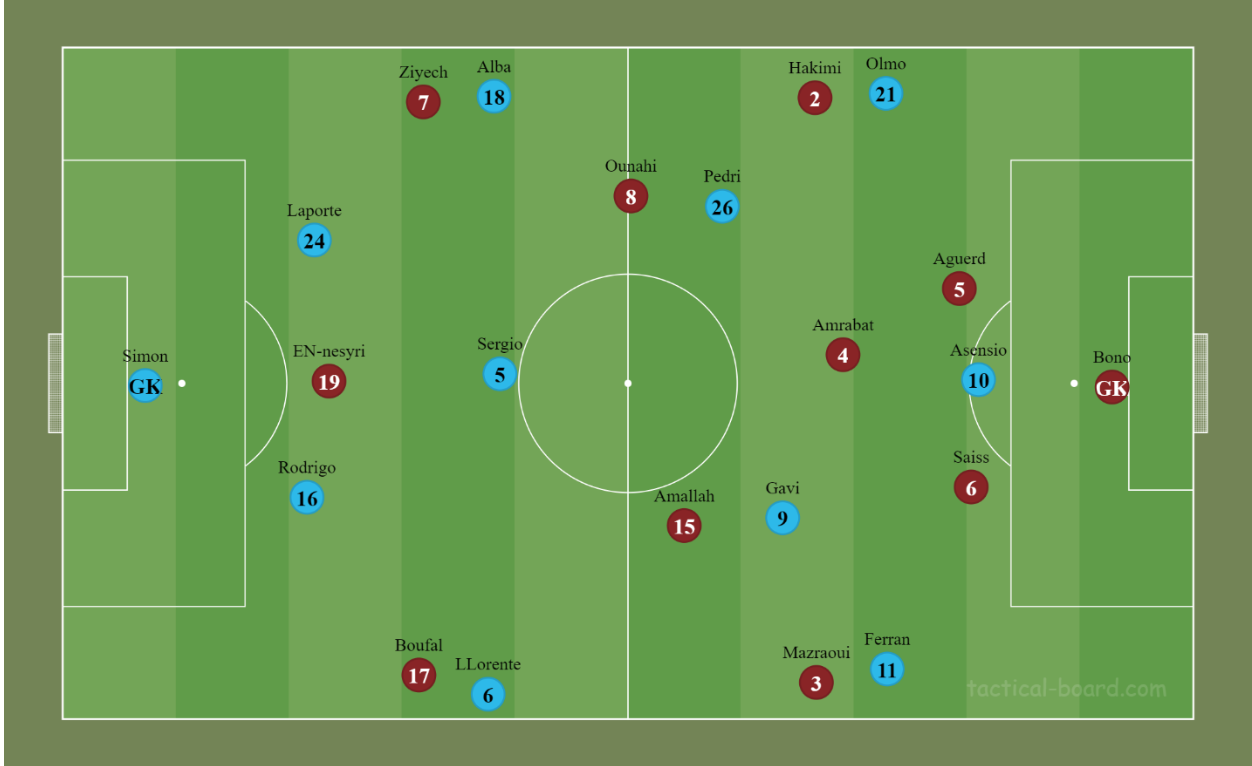
Morocco’s Mid-block vs Spain’s Second Phase of Build-up
Youssef En-Nesyri was in a 1st press line to close the passing option to Sergio Busquets and to be close CBs when the ball reaches Jordi Alba, Hakim Ziyech comes out to press him and Azzedine Ounahi closes the pass channel to Pedri, Sofyan Amrabat in the depth in front of the two CBs and moves horizontally in the space while staying close to Busquets in case he tries to receive the pass.
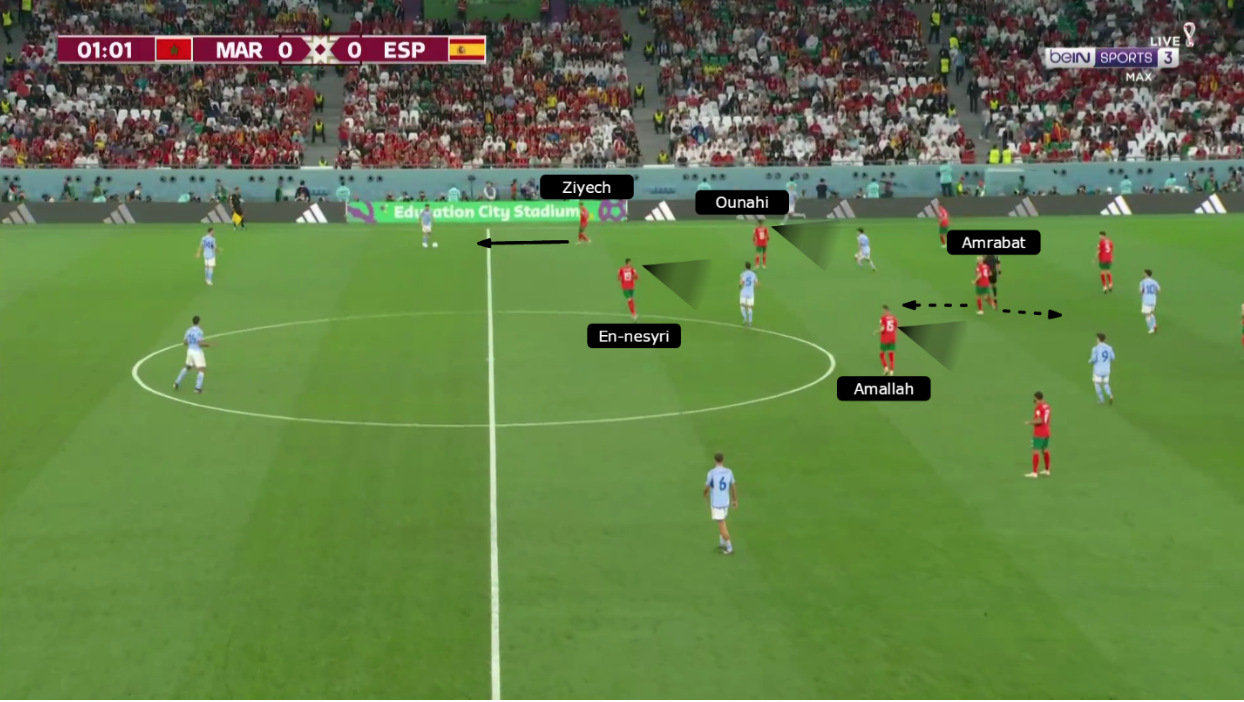
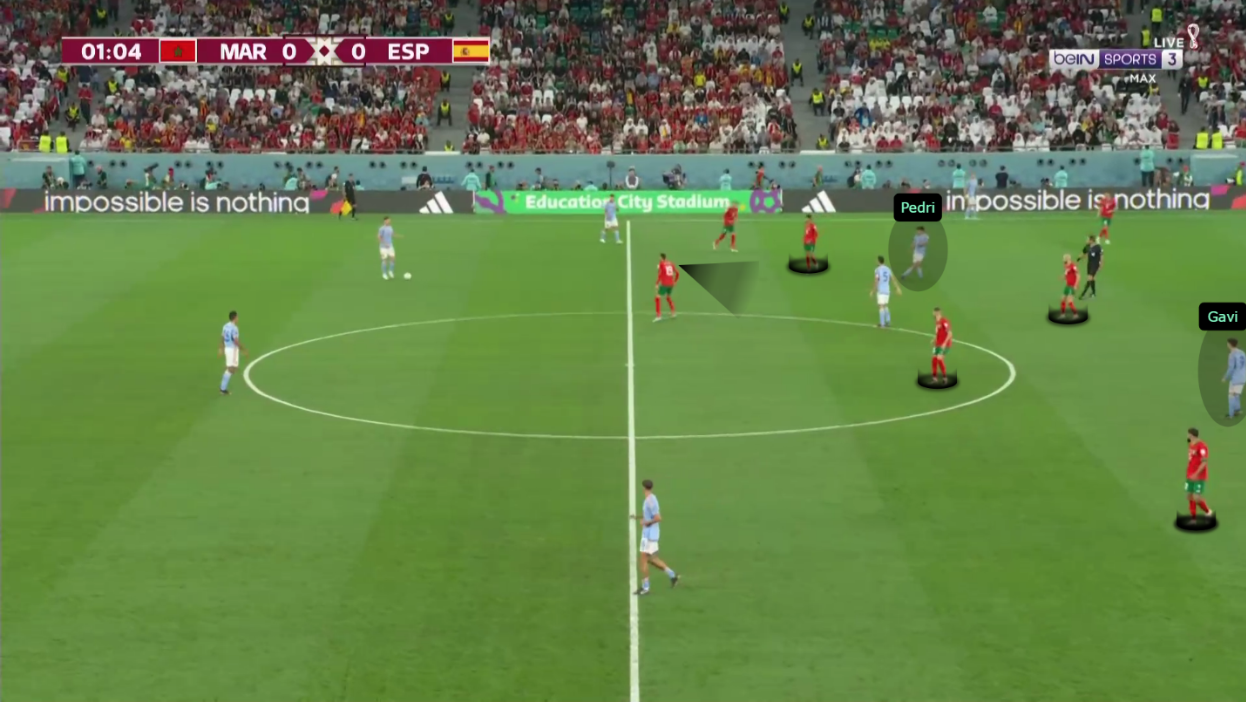
On the other side when the ball reaches Rodrigo, he comes out to closely mark Sofyan Amallah and closed down the passing channel to Gavi and Sofiane Boufal stays close to Marcos Llorente in he received coming out to mark him while continuing to keep Sergio Busquets under the man-marking by Youssef En-Nesyri and Amrabat cover space in the depth.
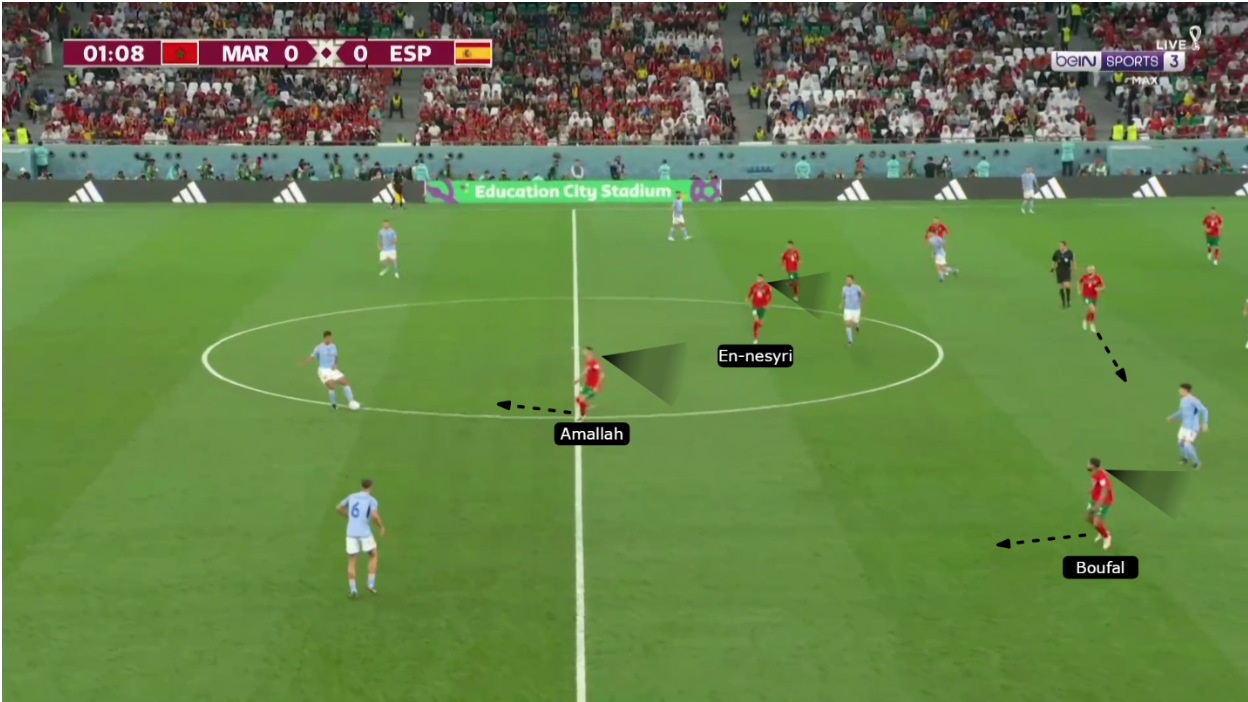
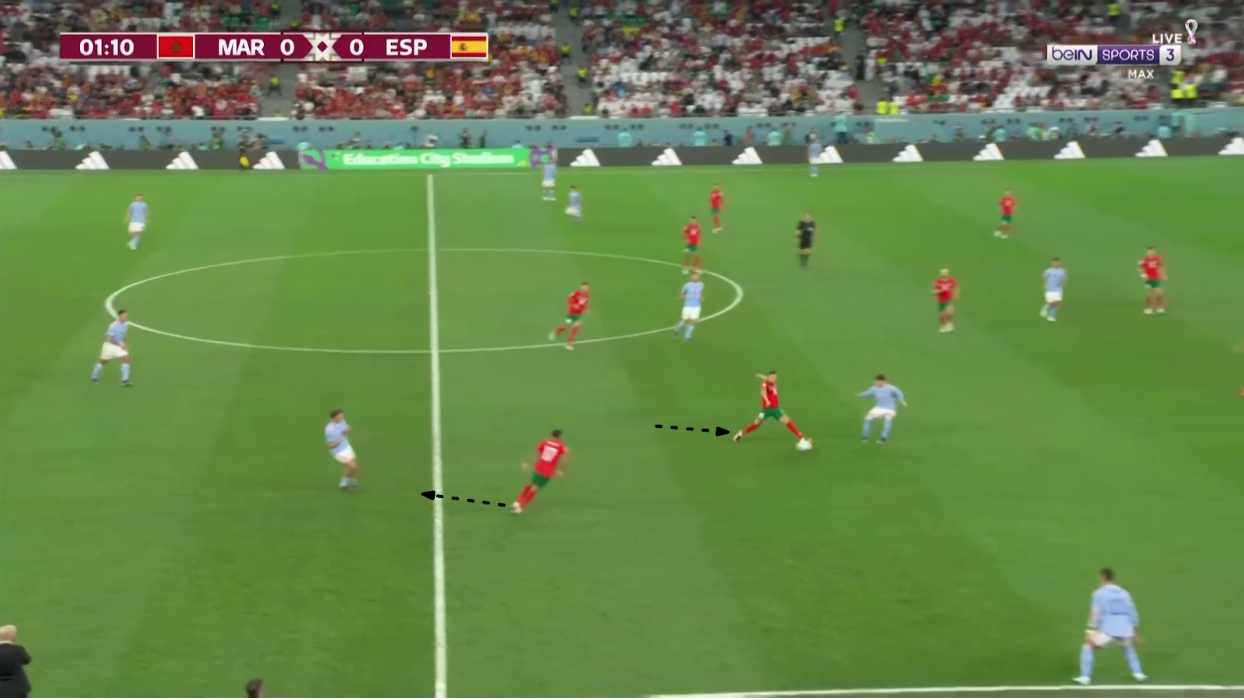
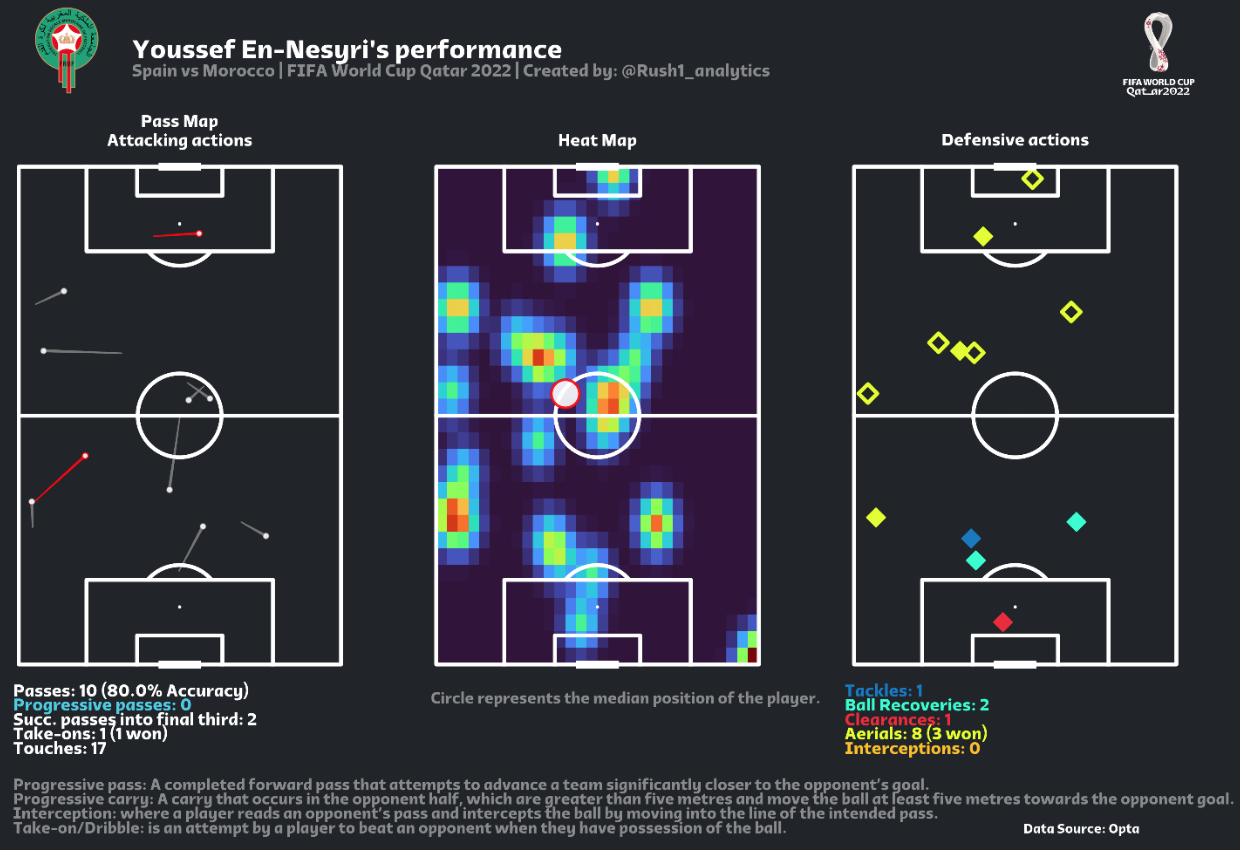
The ball passed a lot between the two CBs and shifted left and right without reaching the ball to the final third.
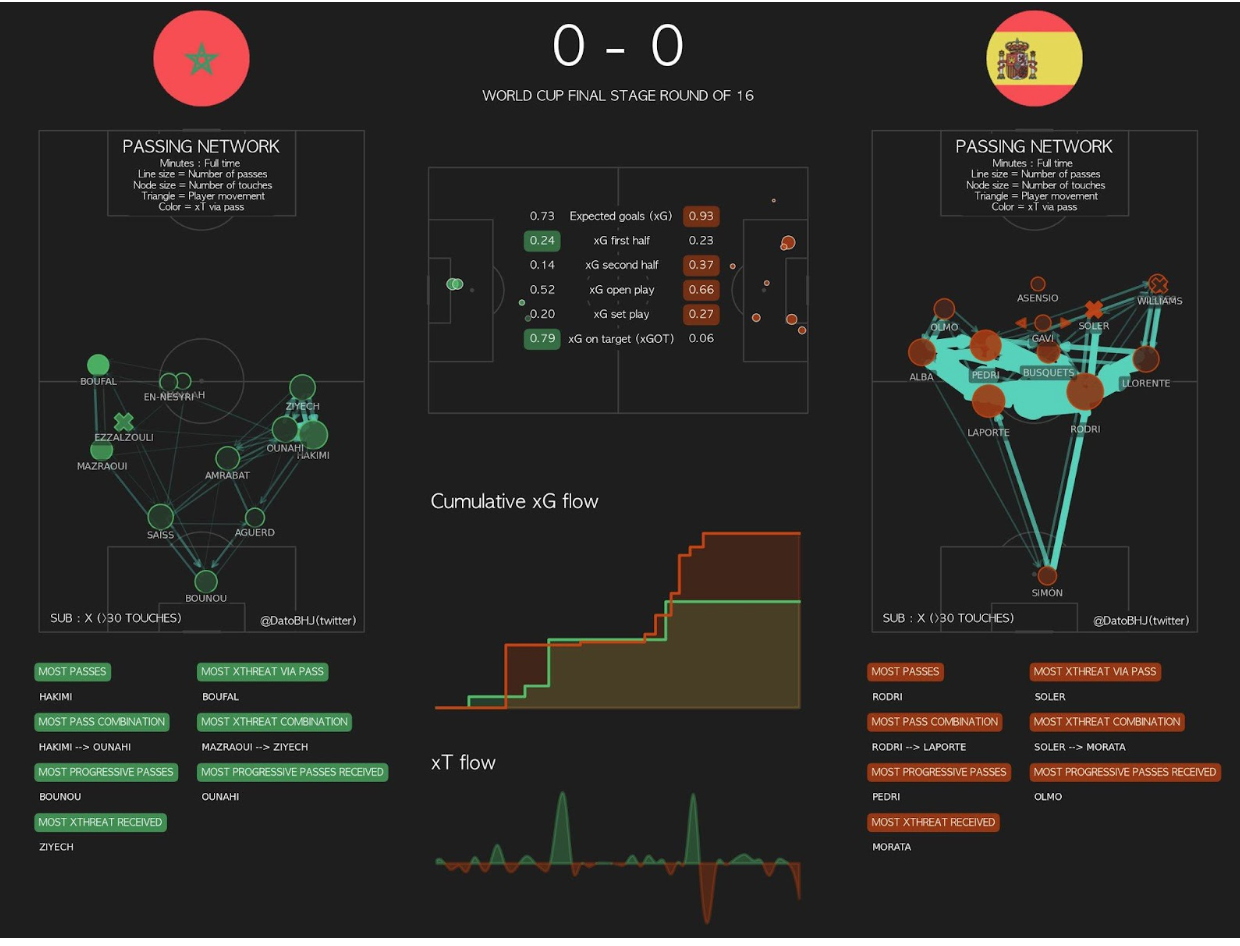
Photo: @DatoBHJ
Then Pedri goes back to receive the ball and Jordi Alba moves forward with Dani Olmo cutting to half space to try to find passing options and create a numerical superiority over Achraf Hakimi, so Ounahi was going up to put the press on Pedri and Hakim Ziyech delayed to mark Olmo between the lines and Amrabat close them and En-Nesyri staying mark Busquets.
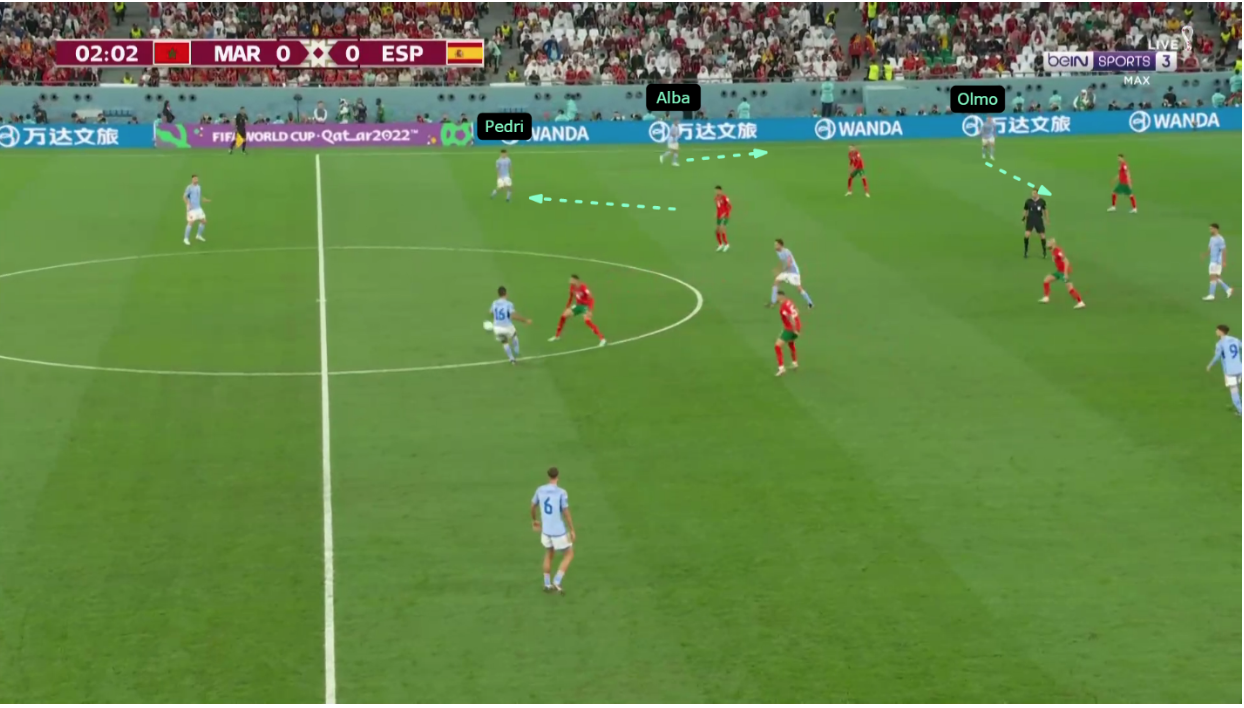
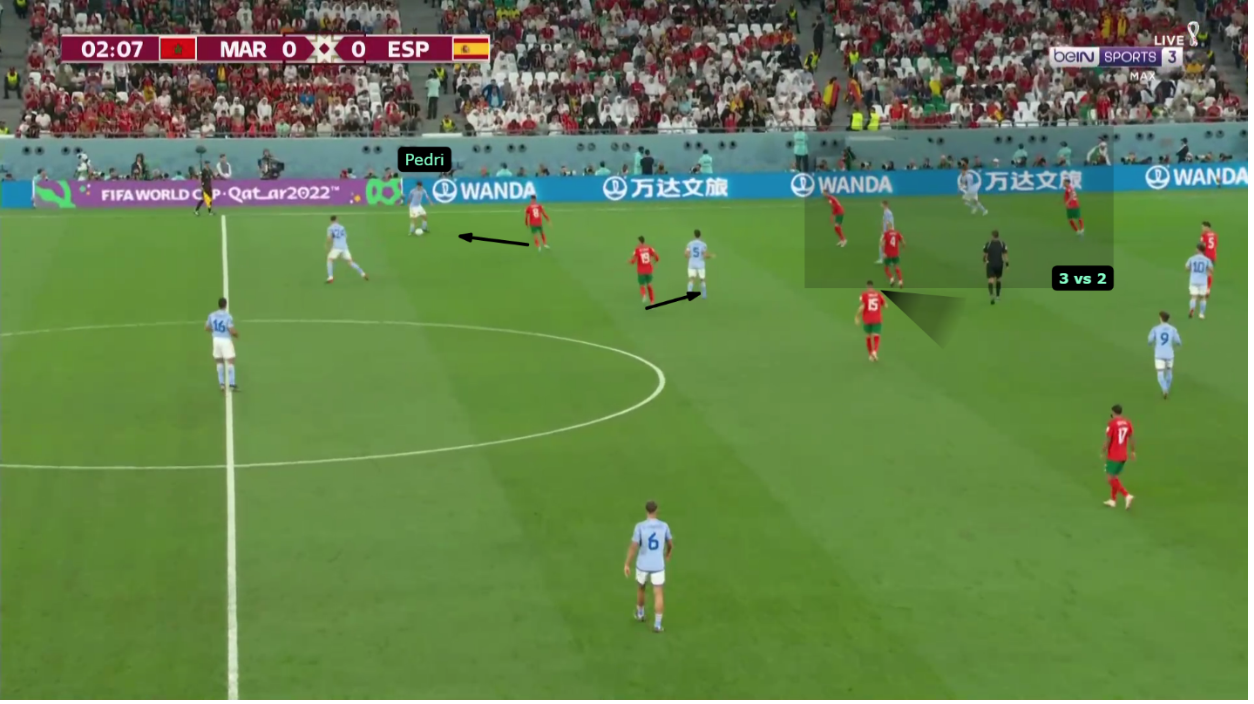
Marcos Llorente was not at least mentally ready for this match, in more than one chance to pass to Gavi or Sergio Busquets between the lines but he did not take the risk and was looking for a pass to the CB or an easy pass.
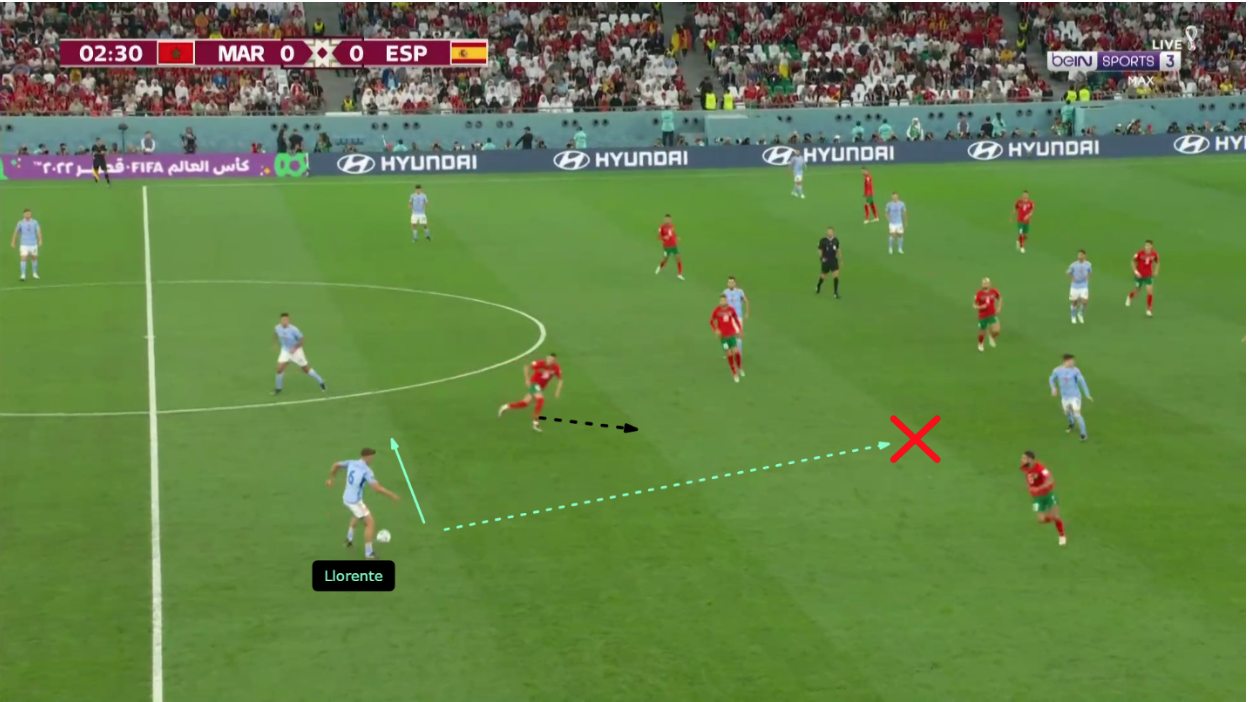
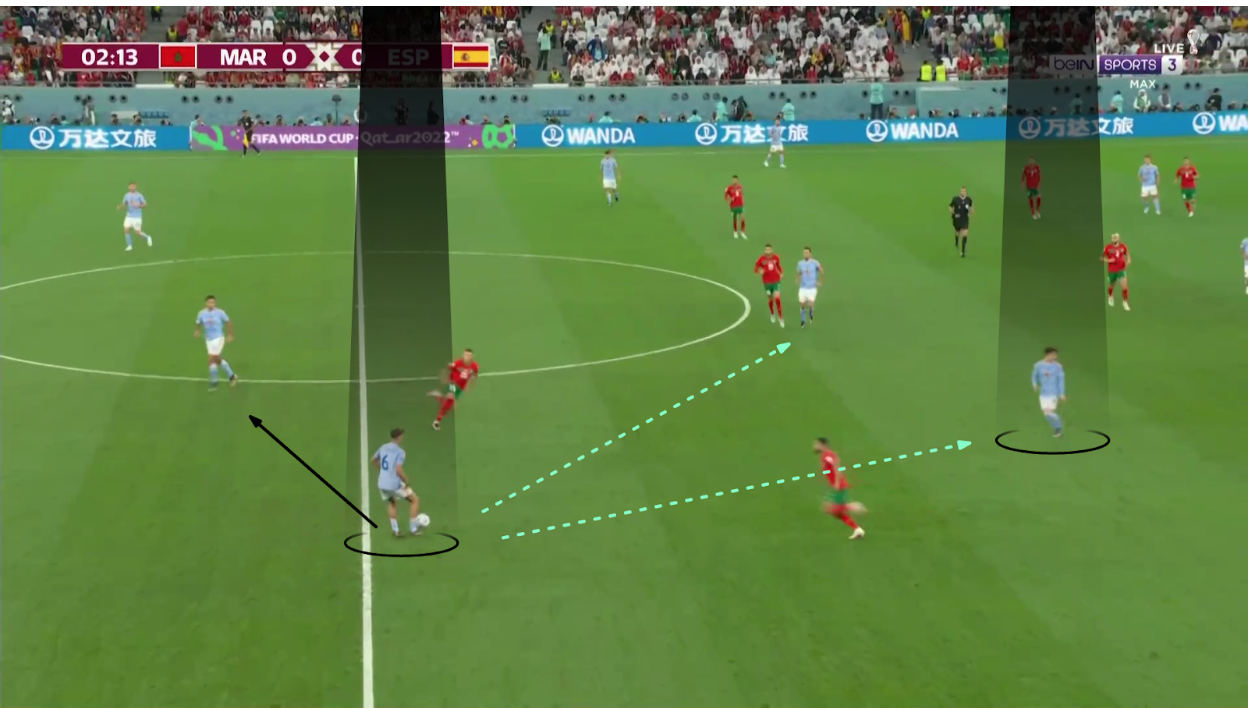
When Spain was able to break the first press line and pass the ball to the flank area, Morocco’s shifting was good to close the ball area and create a numerical superiority with four players.
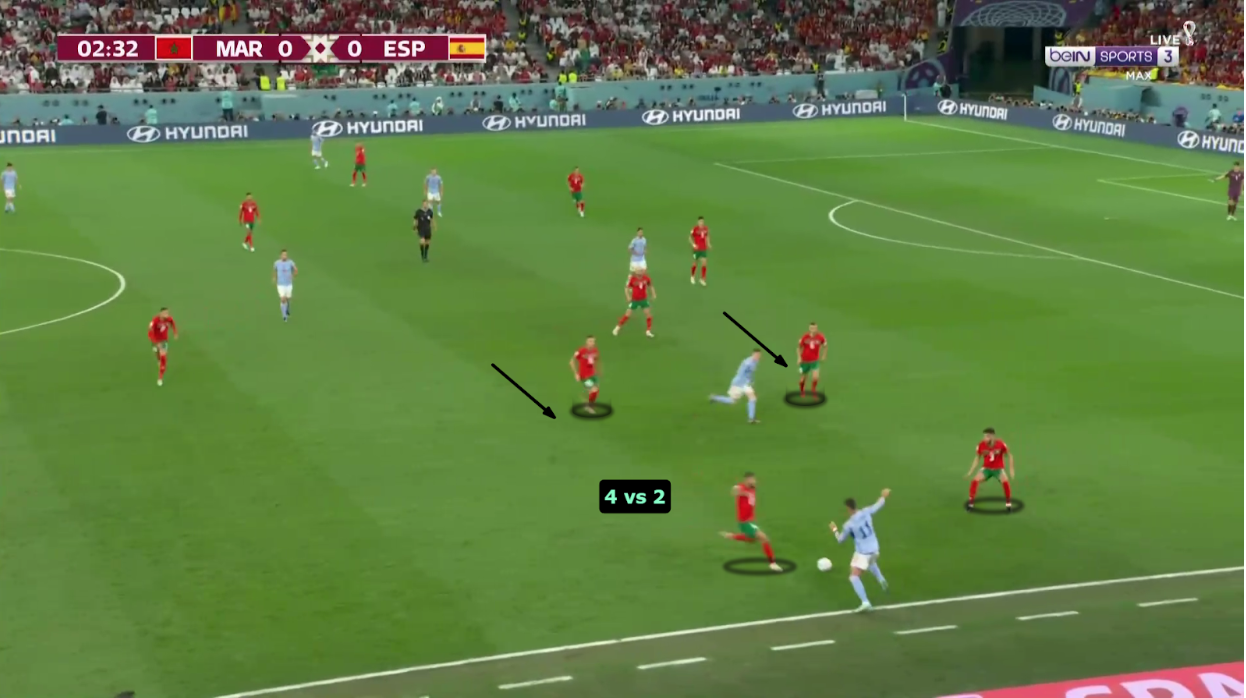
The first free space was attacked in Morocco’s defense from the shifting of Marcos Asensio to the side of Olmo and Alba with the shifting of the Moroccan players to the same side, creating a gap between the two CBs Gavi was attacked space in depth and receiving his pass from Pedri, but the CBs Romain Saiss and Nayef Aguerd dealt excellently 1vs1.
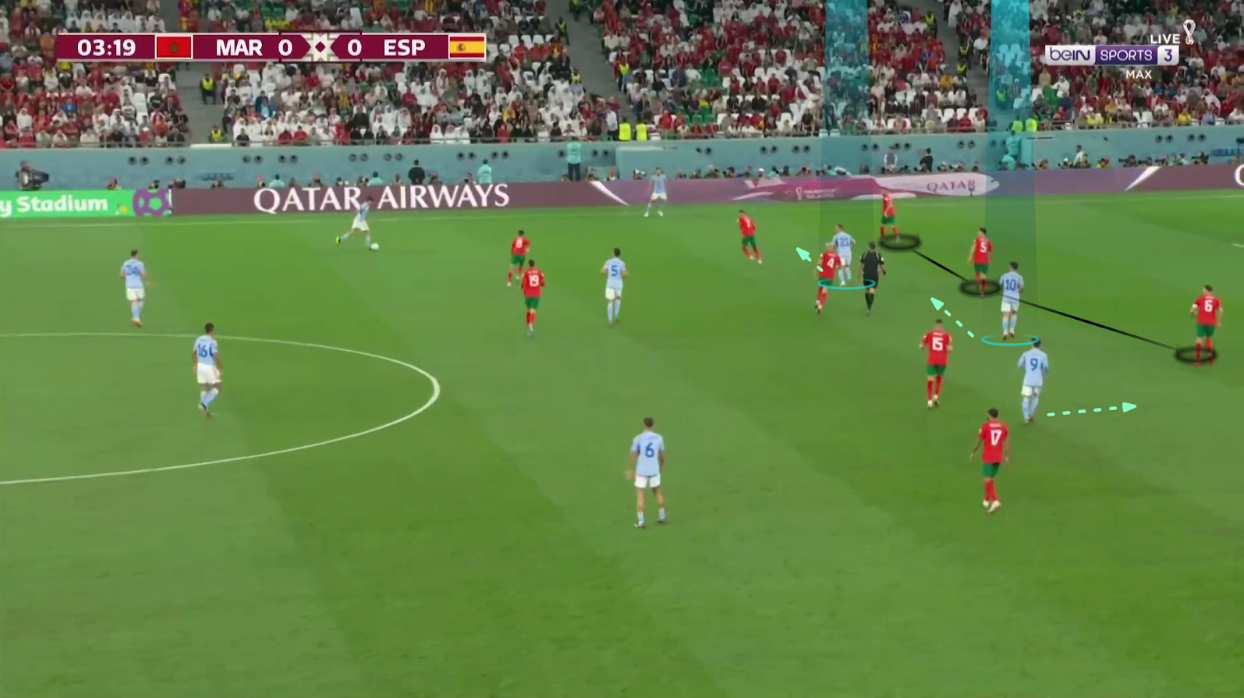
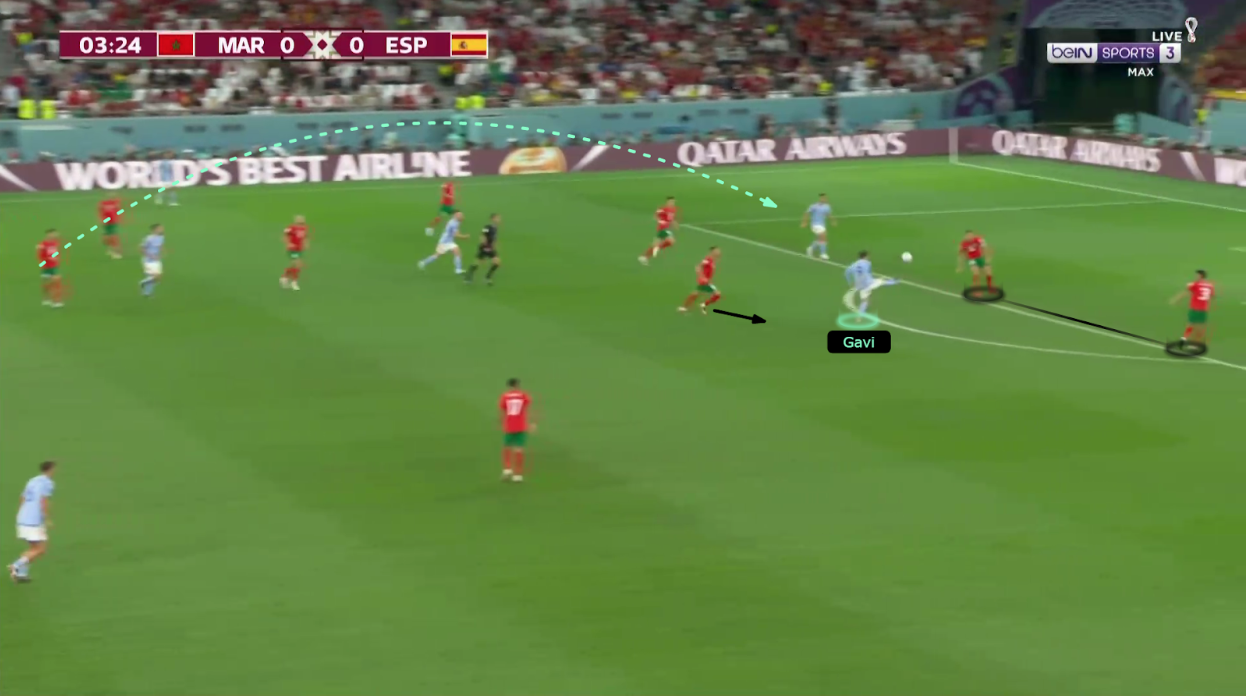
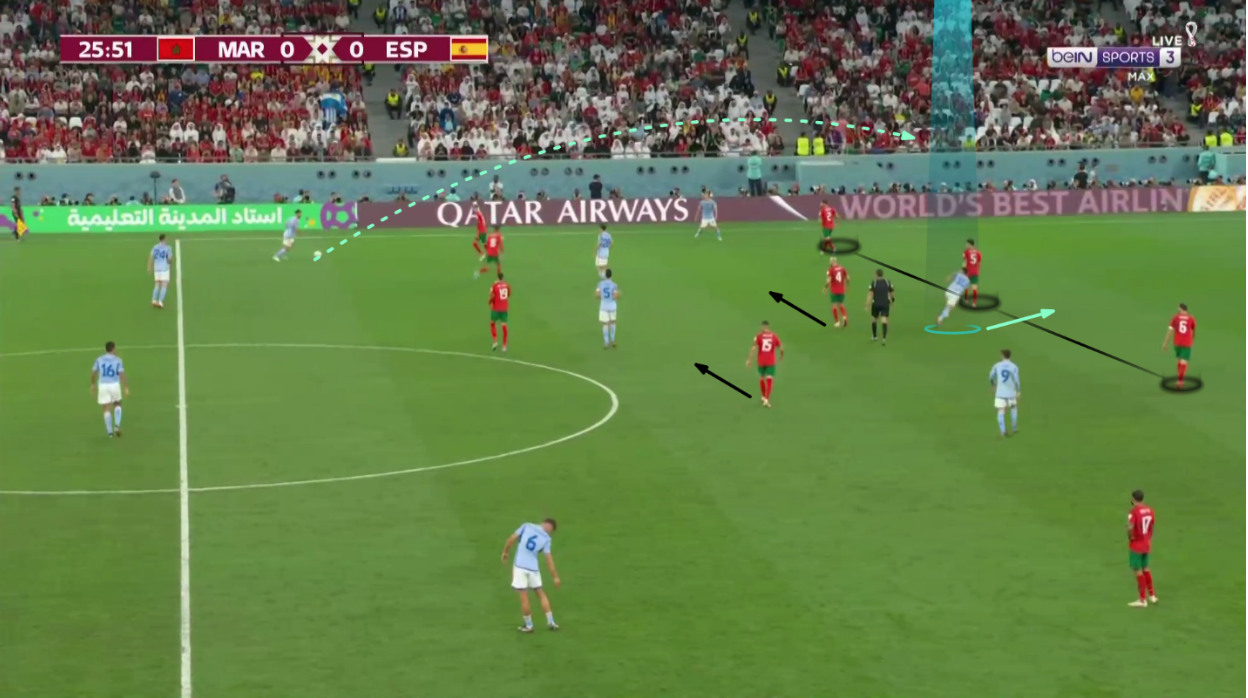
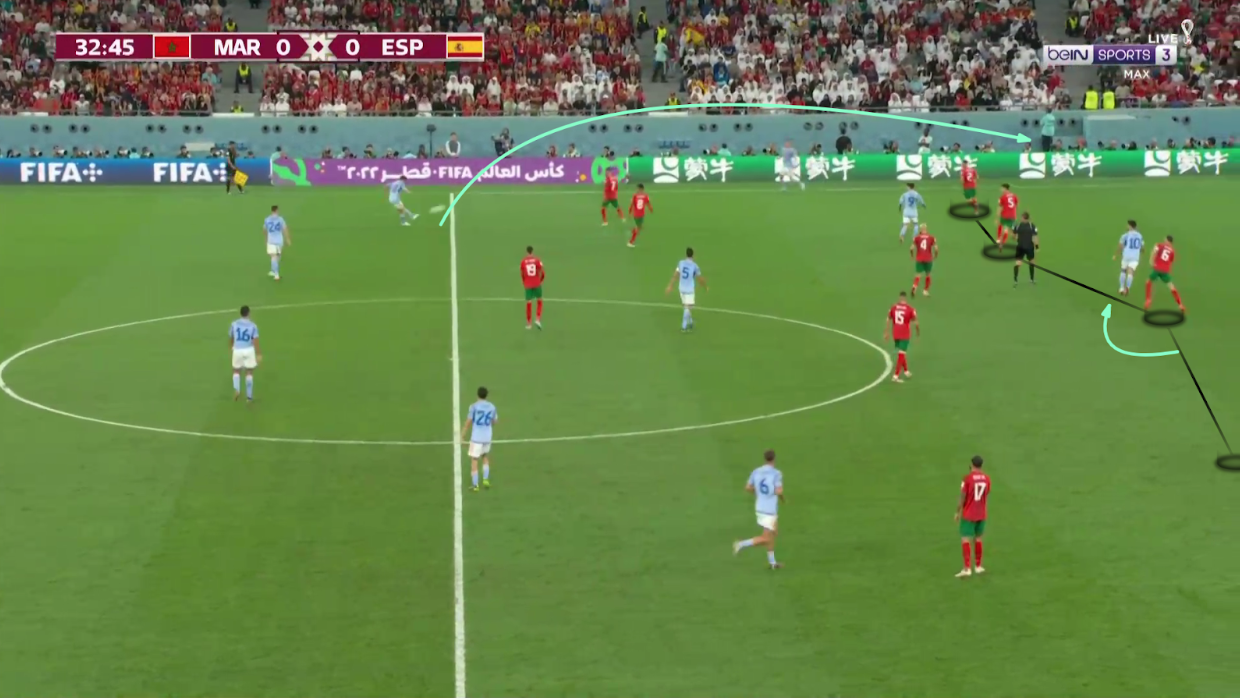
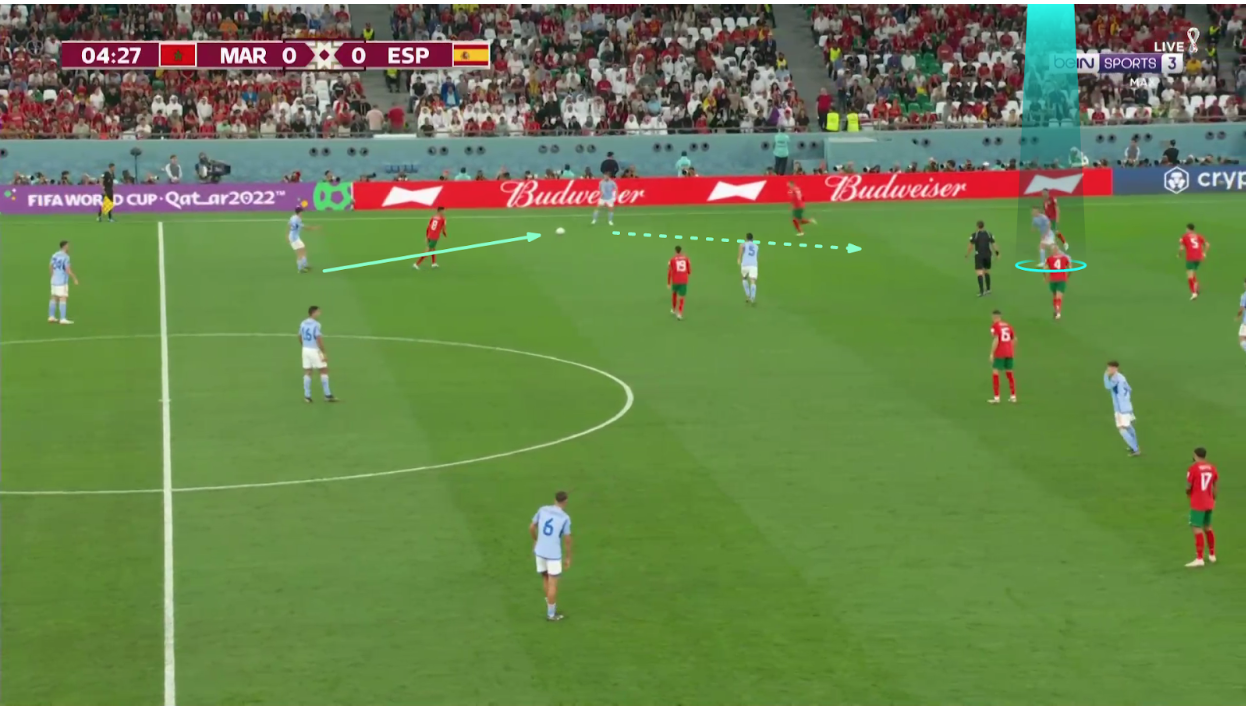
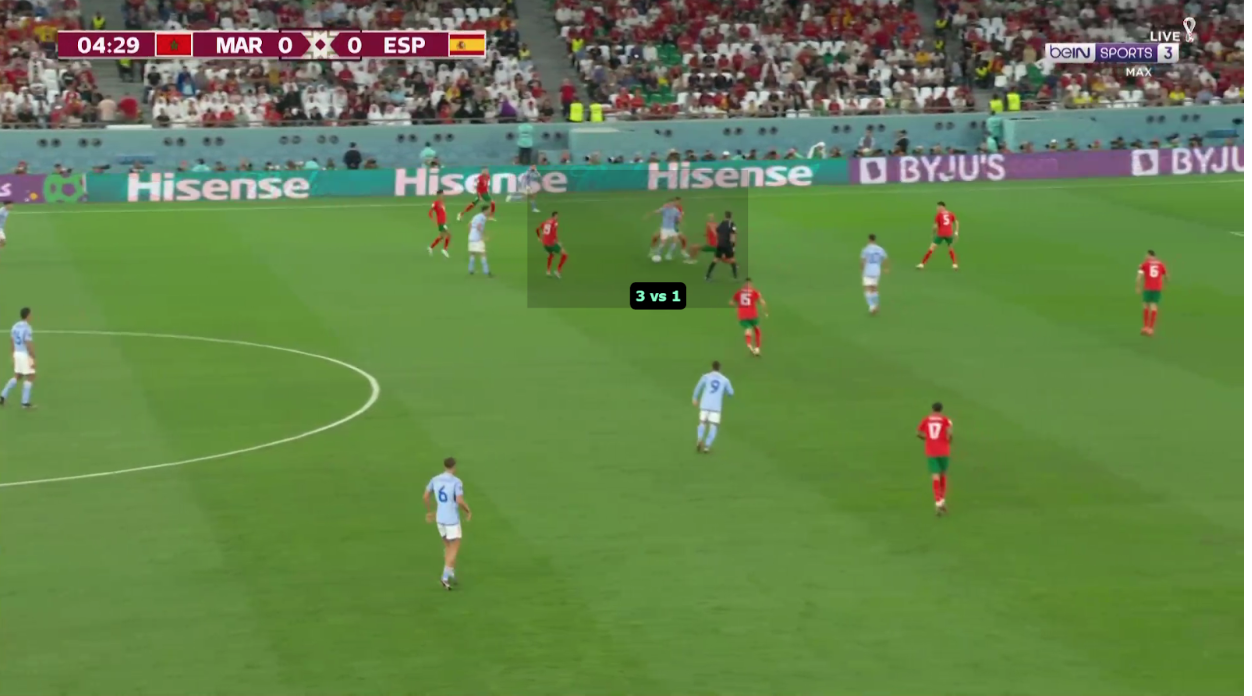
Another pattern is when Gavi gets steps back and Llorente attack the half-space and Ferran Torres a winger, tries to play the passing that breaks the lines and gets the ball to the final third or rotates on the line to attack Ferran from the space on the flank but as usual, the numerical superiority of Morocco in Noussair Mazraoui, Saiss, Boufal, and Amallah in keeping the situation of 4 against 3 or 2.
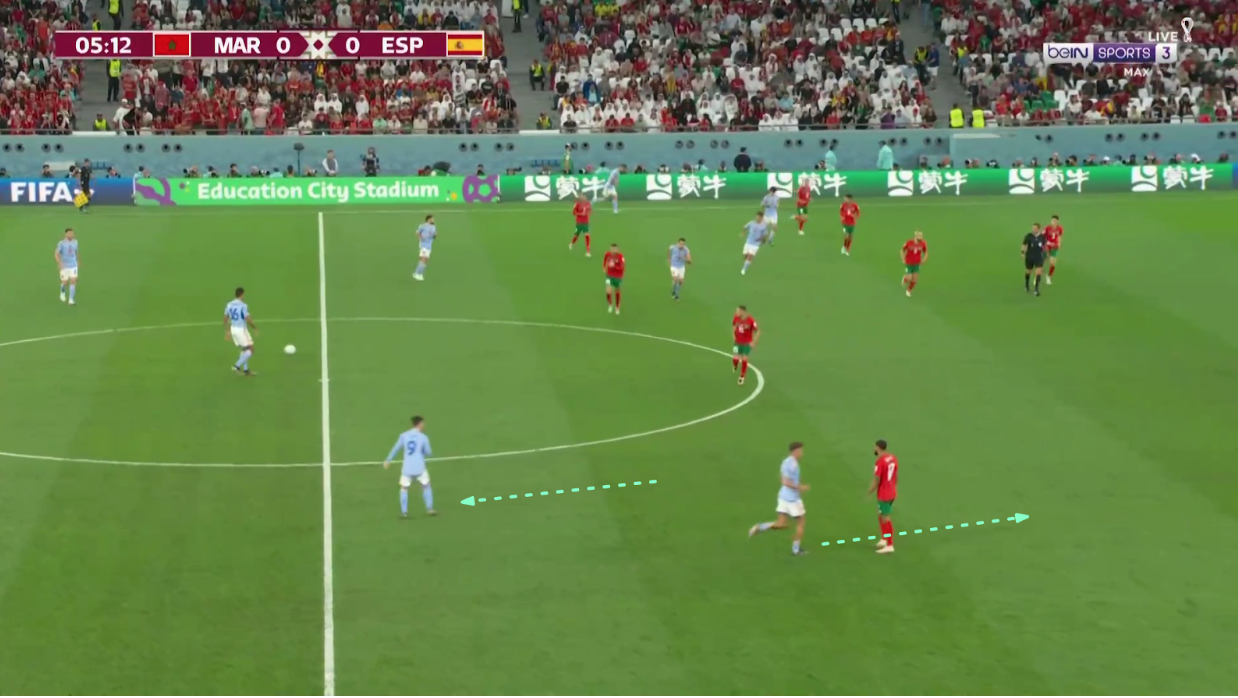
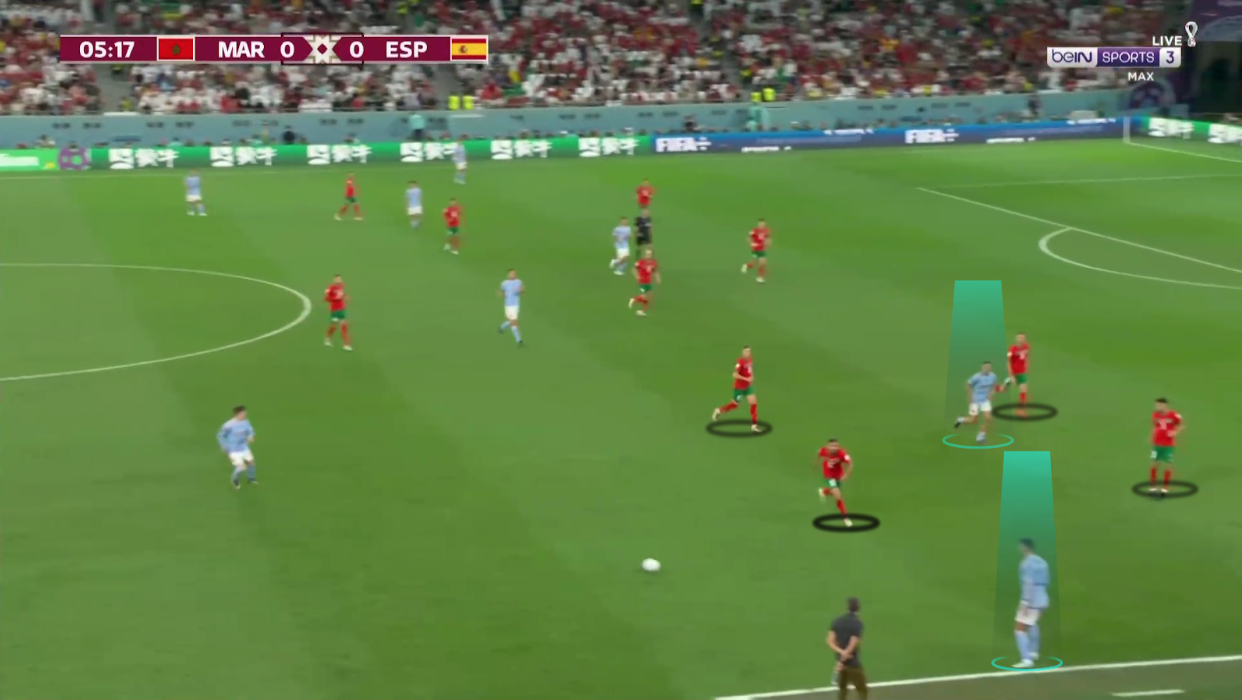
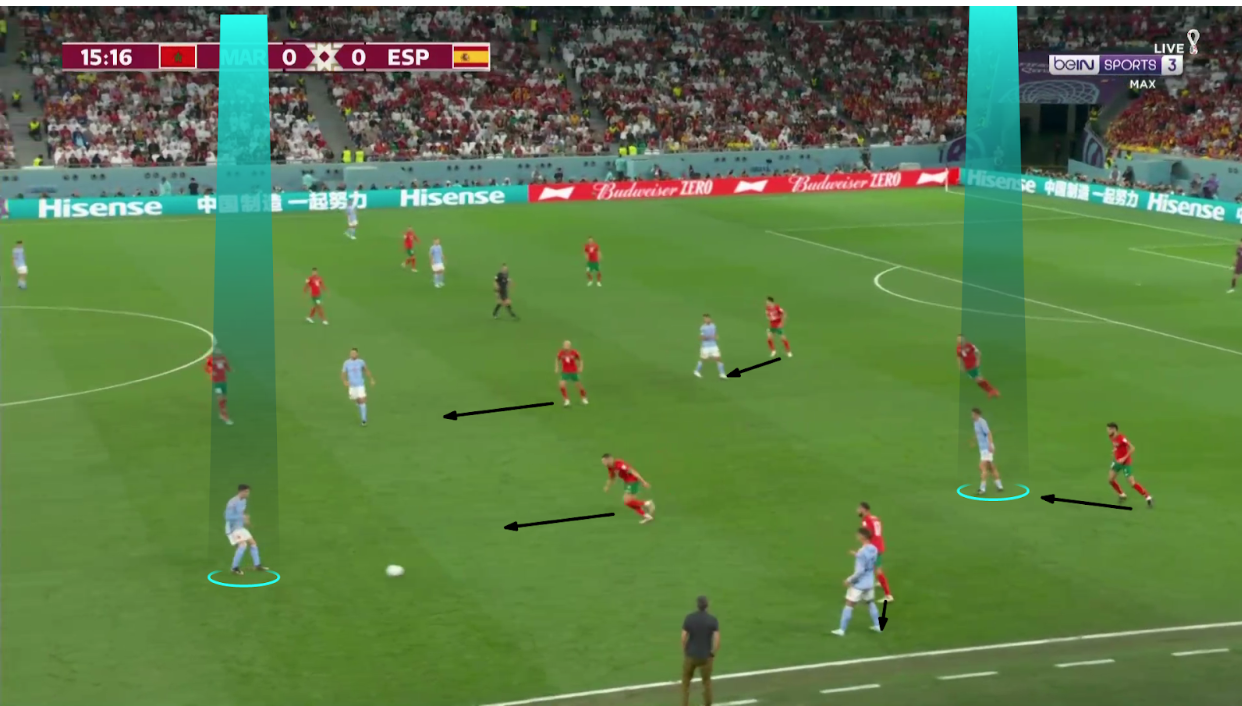
Another pattern by Spain after the shifting of play to the Alba side and the pull of the Moroccan players, then receiving the pass from Pedri and shifting the ball by a long pass to the Ferran side to try to create a 1vs1 situation, but the rapid shifting of the Moroccan defender was cover the space for Ferran and Gavi and cut the ball.
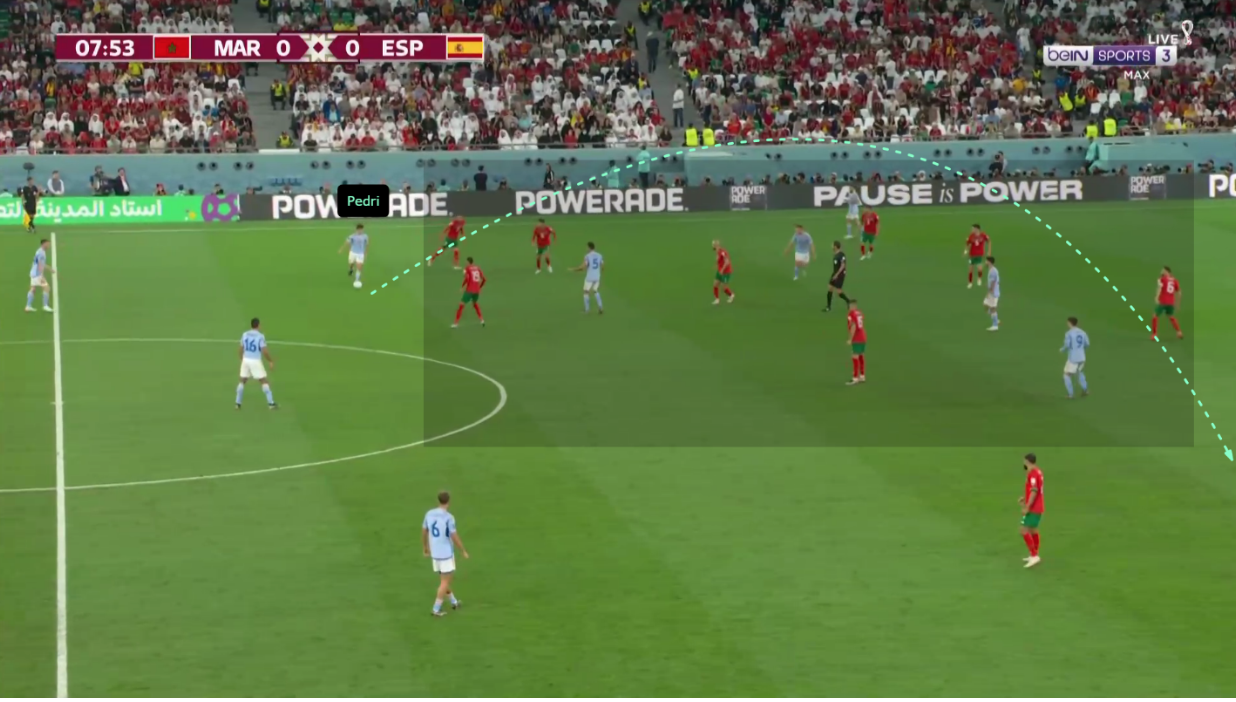
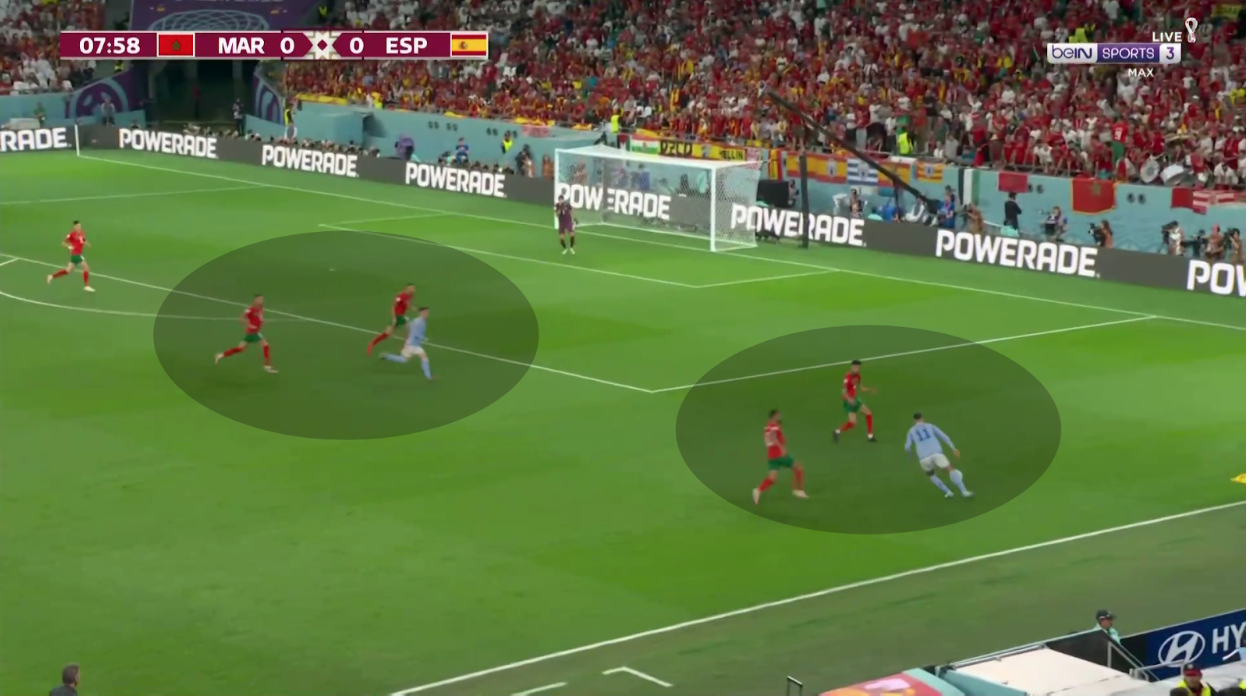
All of the above did not create solutions against Morocco’s compact defense lines, so instead of Enrique from Pedri and Gavi’s positions to exploit Pedri’s passes on the other side and escape from Ounahi press, the press of Amallah was less aggressive than that of Ziyech or Ounahi, so Pedri was able to pass between the lines and with Busquets in high areas of the Morocco line the ball was up to the final third but always lose the ball around the penalty area.
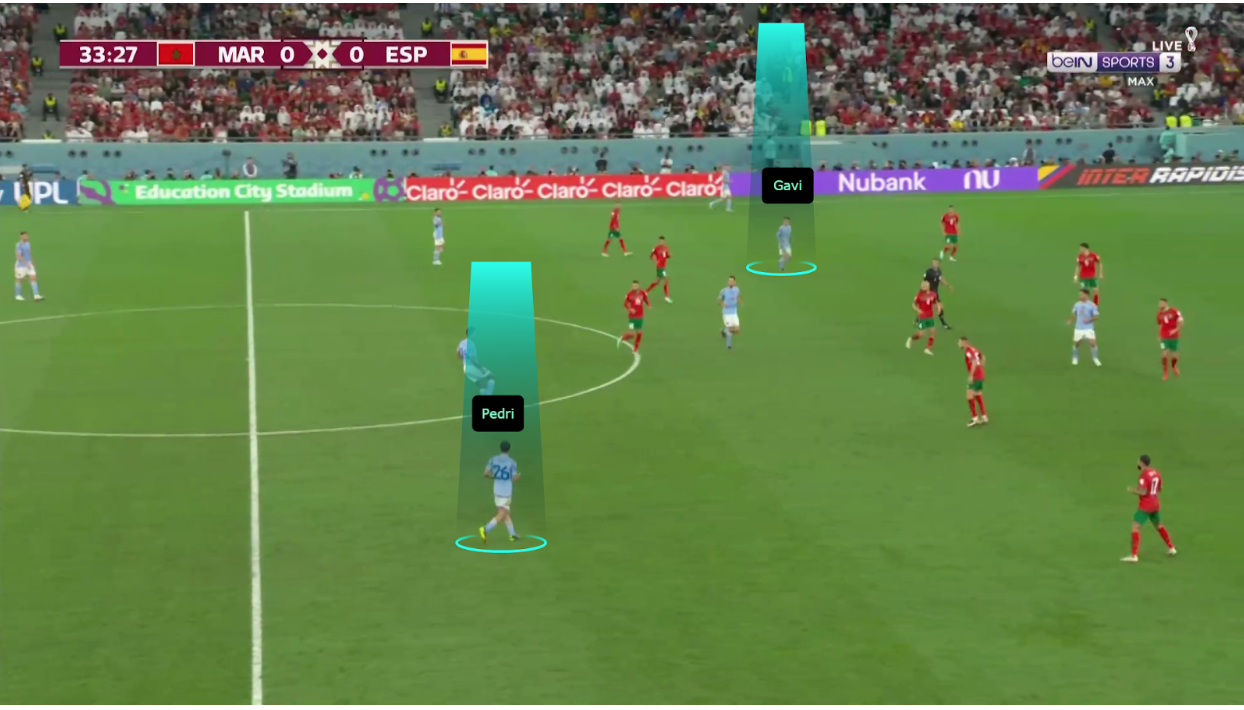
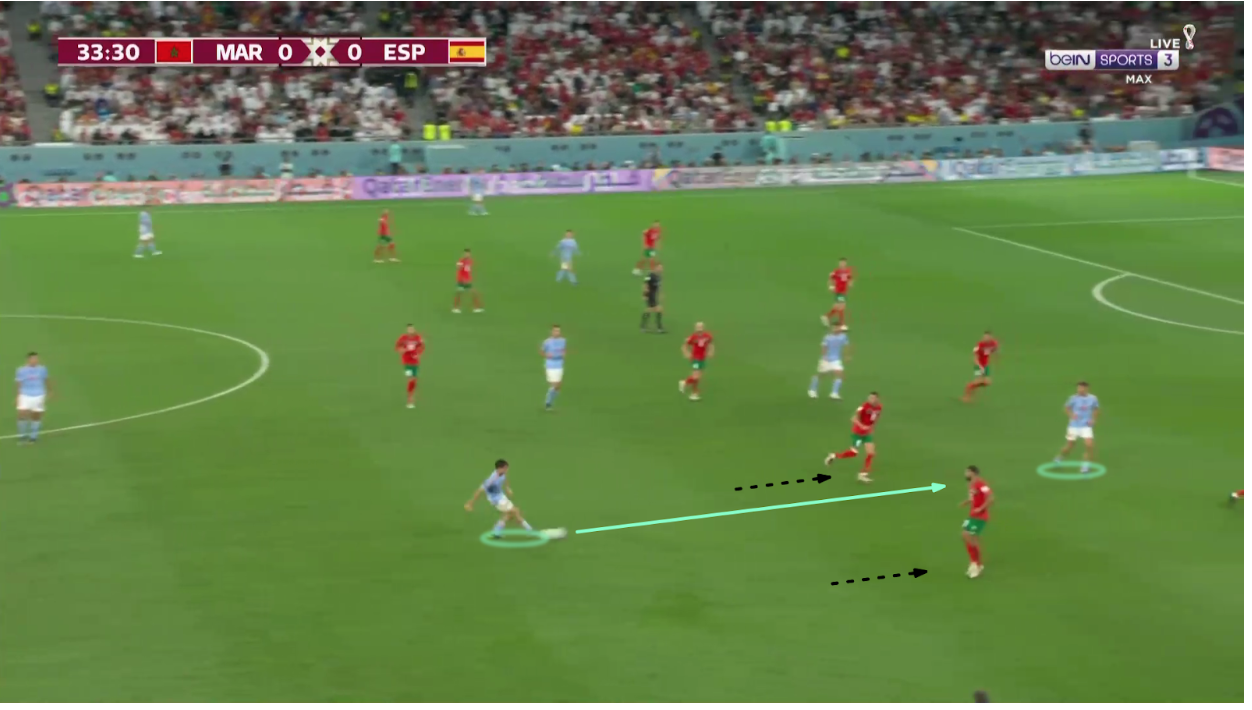
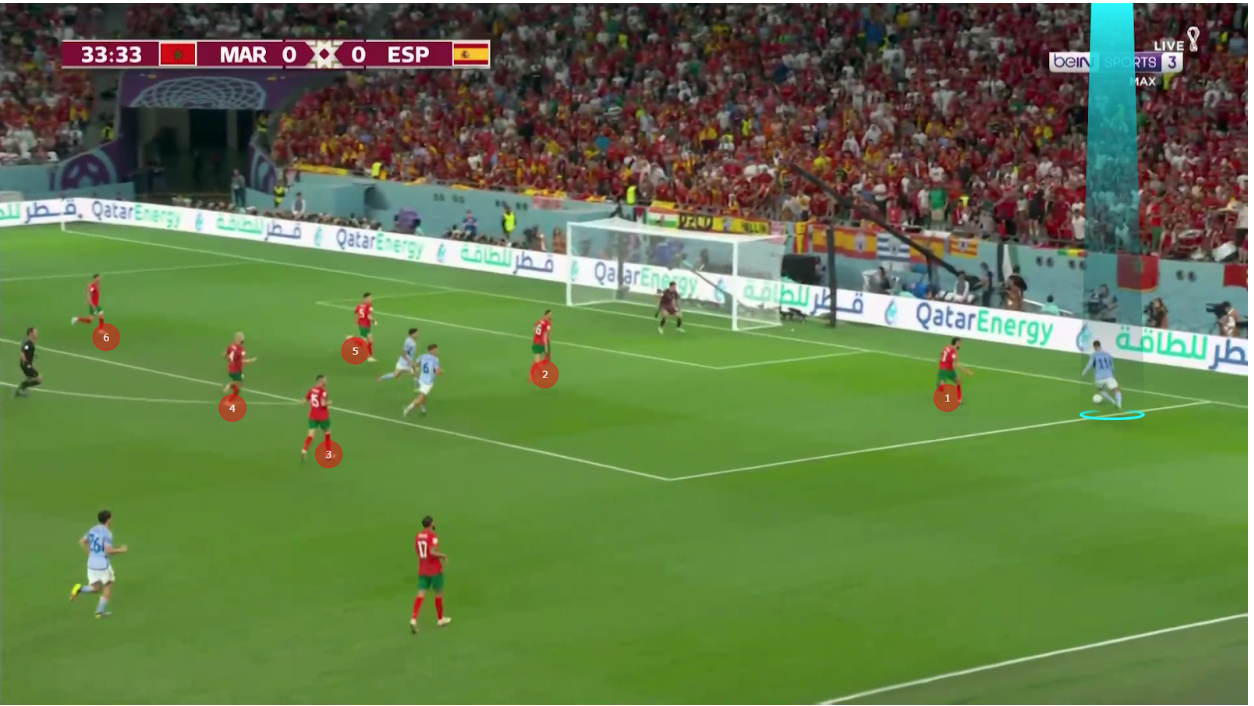
At the same time Gavi on the other side link-up with Olmo and Alba to receive passes or create space for Olmo but the defense action by Hakimi and Ziyech great to close space there.
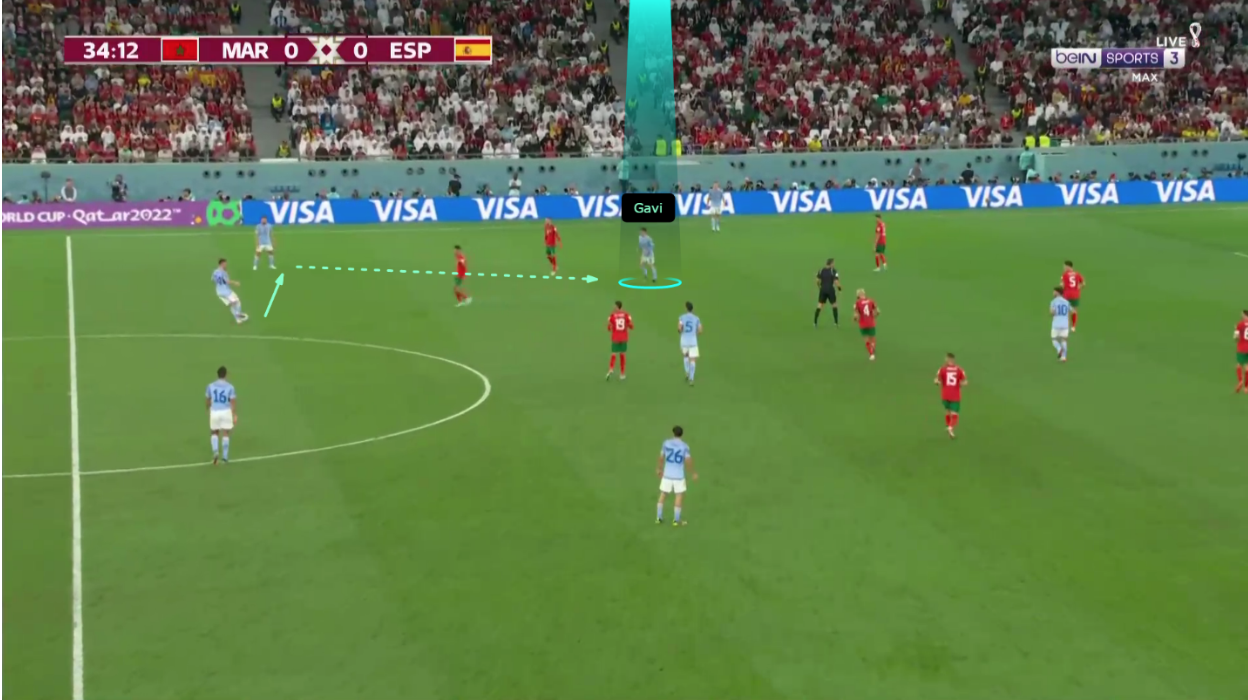
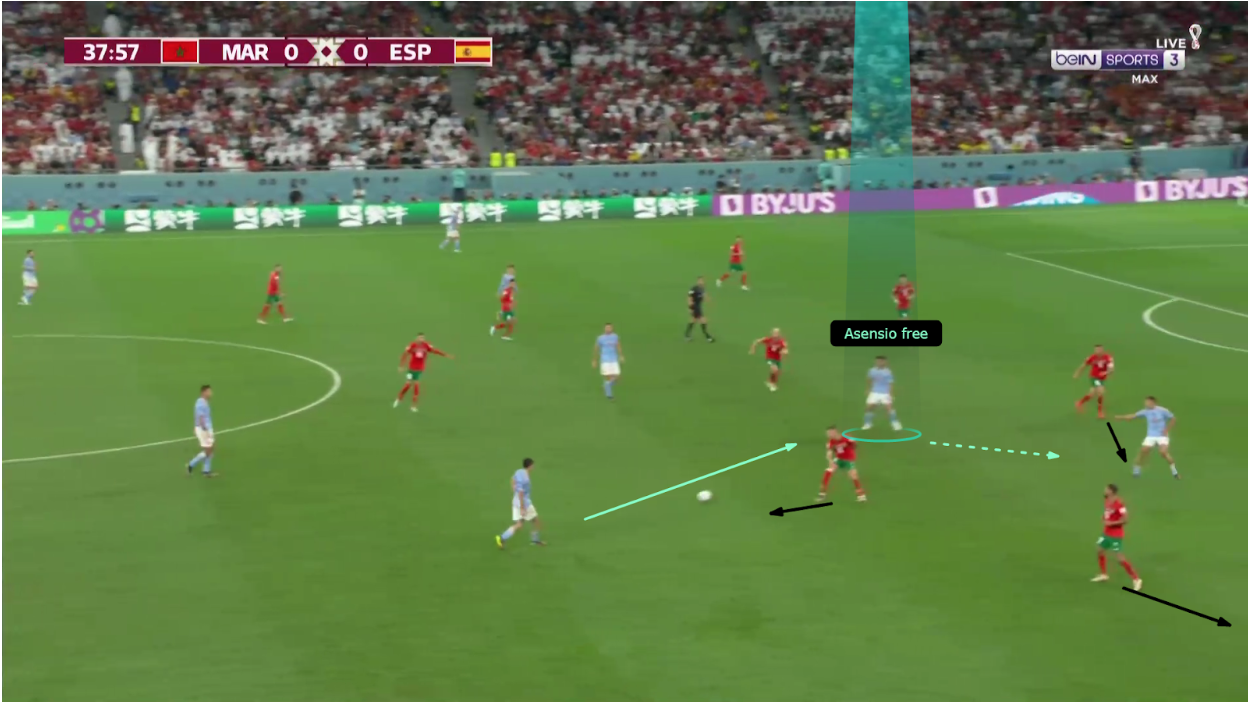
In the second half, with Morocco’s players lacking stamina, the defense lines started to drop back to the low block, Spain started to find passing options in the final third, especially on the side of Gavi, and link up with Olmo and Alba, and sometimes Asensio, but the defense activities of the two CBs Saiss and Aguerd was great and the ground duel was in for him to a prevented create a chance on Bono’s goal.
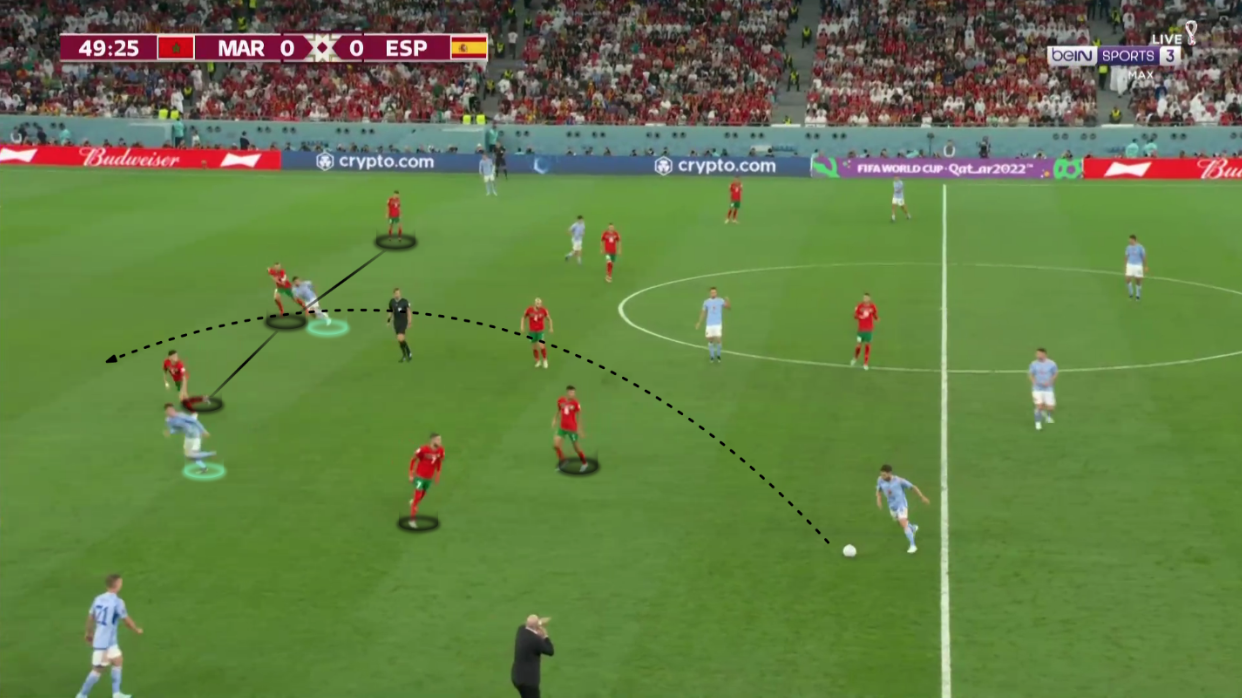
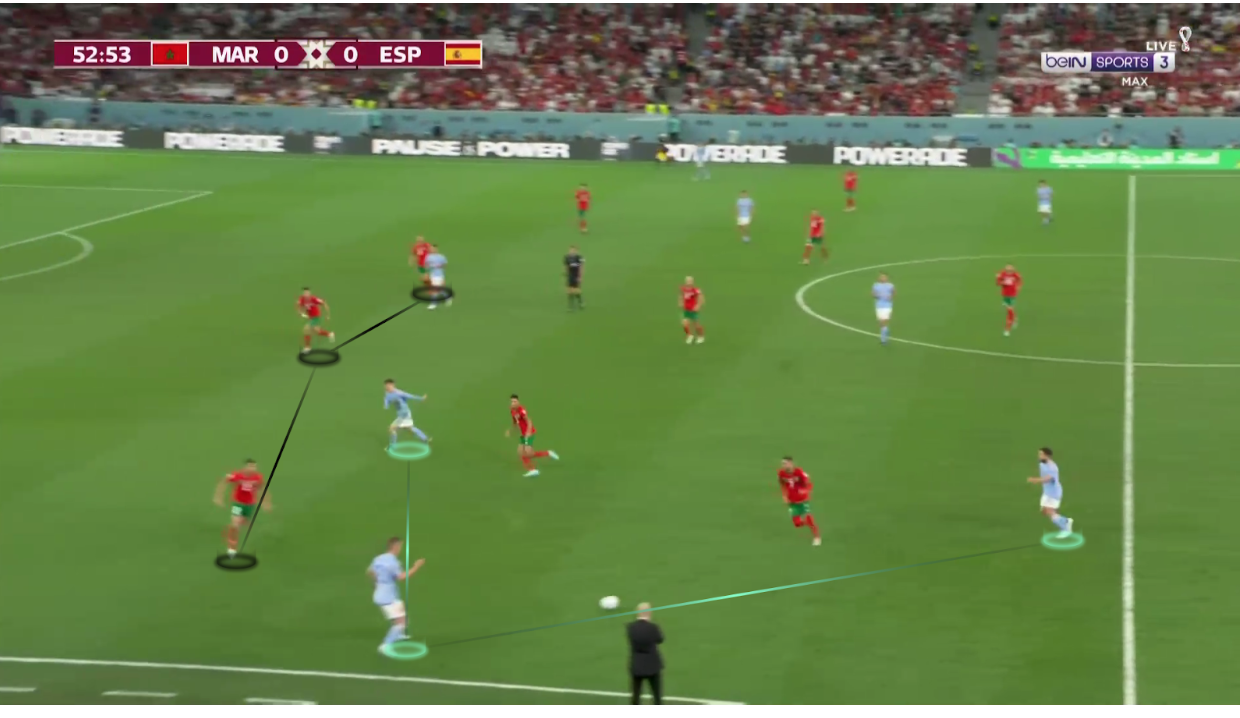
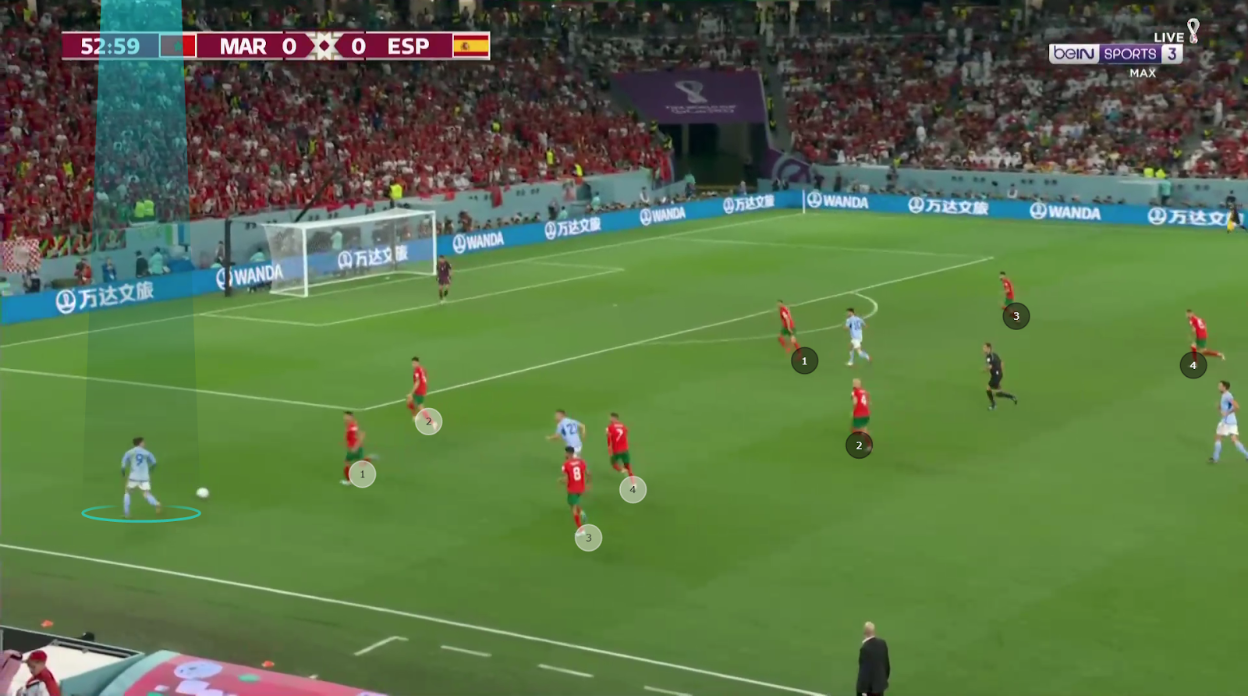
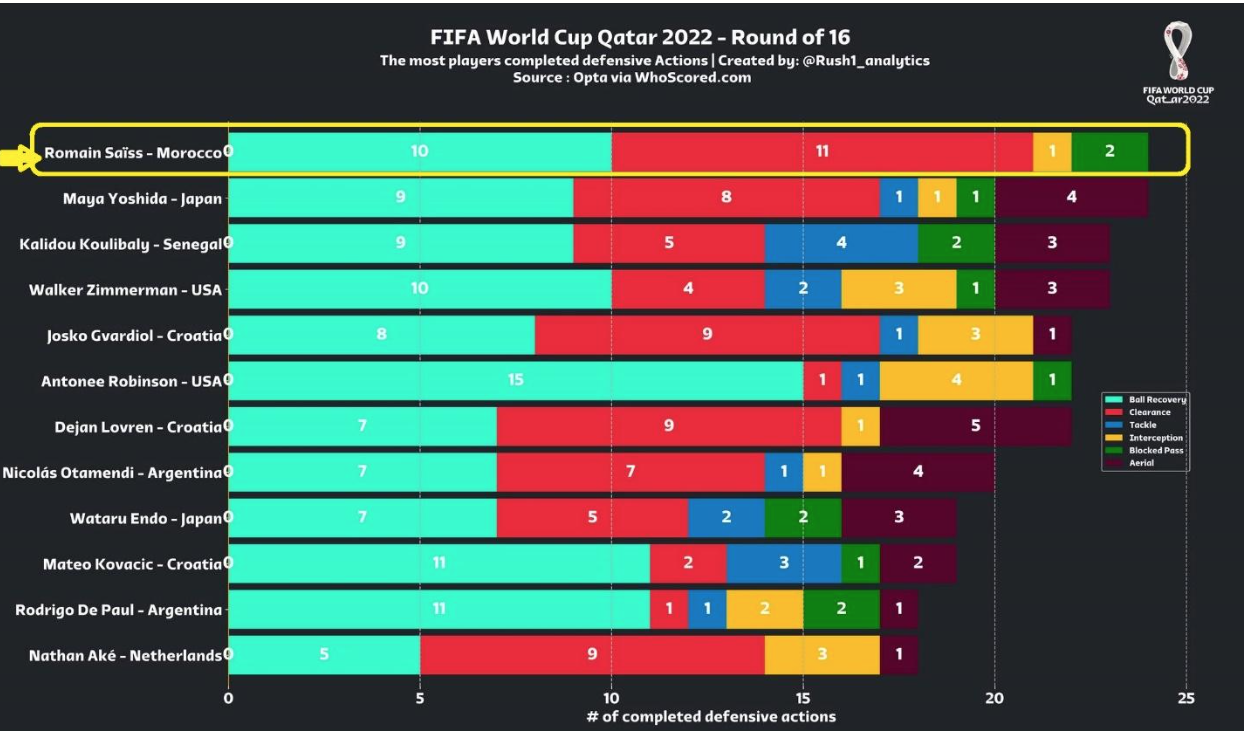
Morocco in the Second Phase of Build-up
Walid Regragui did not rely on progressing the ball from the back because of the difficulty of doing so against the Spanish high press and the inability of the two CBs to deal with the ball under pressure, so most of the attempts were to send high balls towards En-Nesyri, who falls next to Boufal to gain the aerial ball or to Boufal to win the second ball.
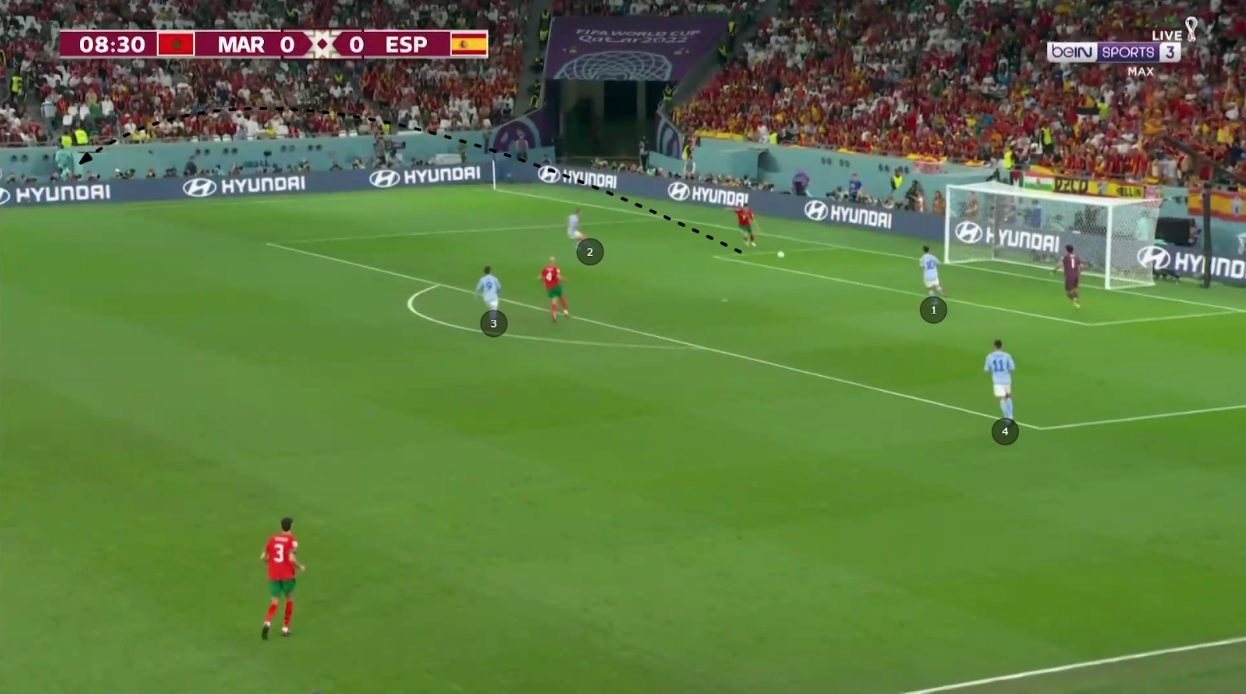
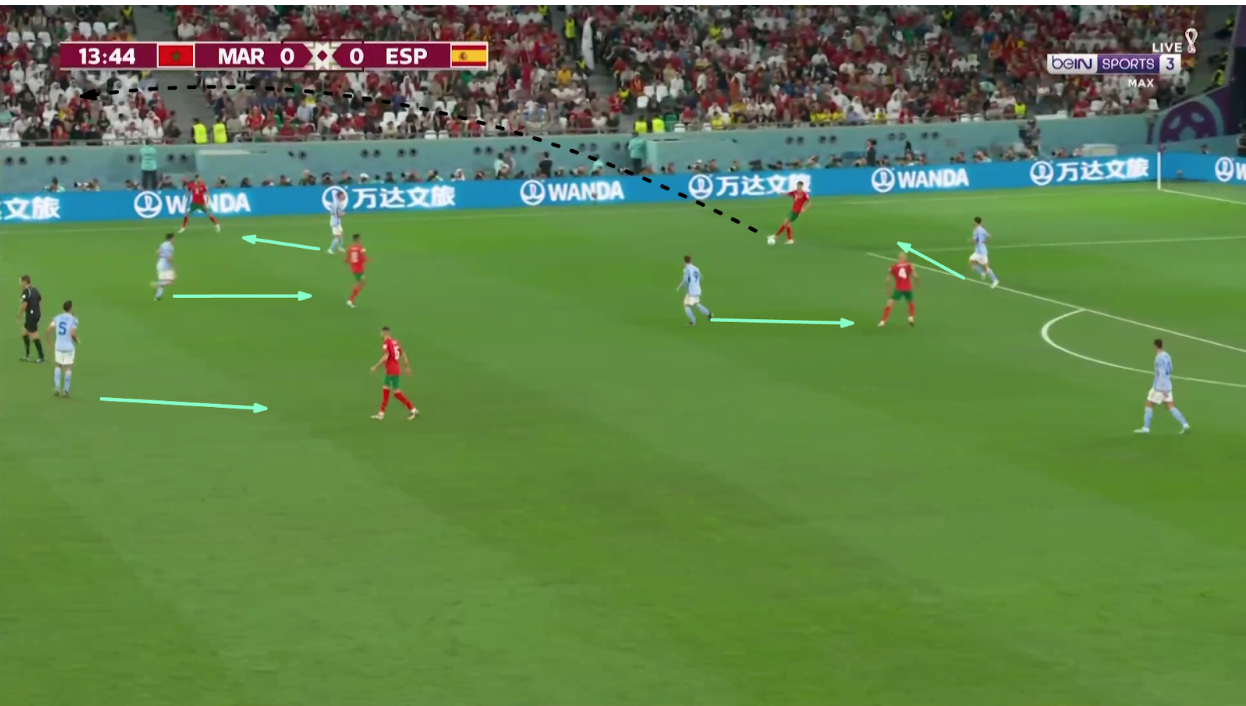
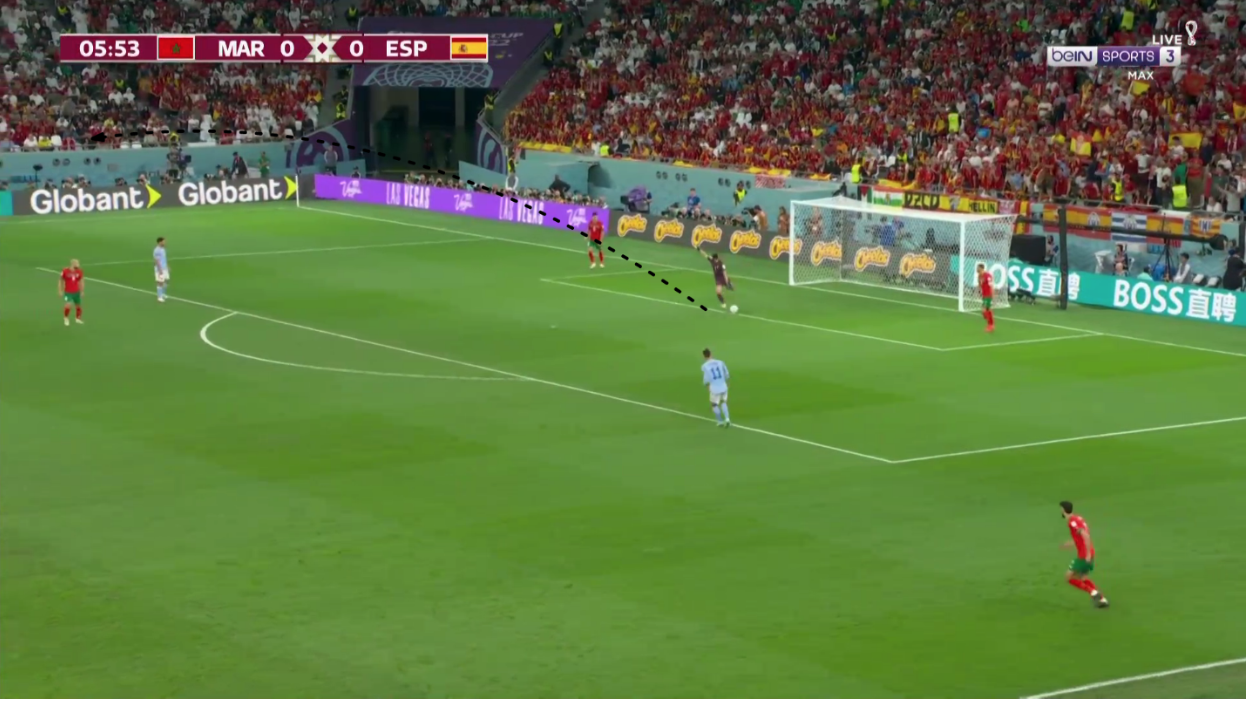
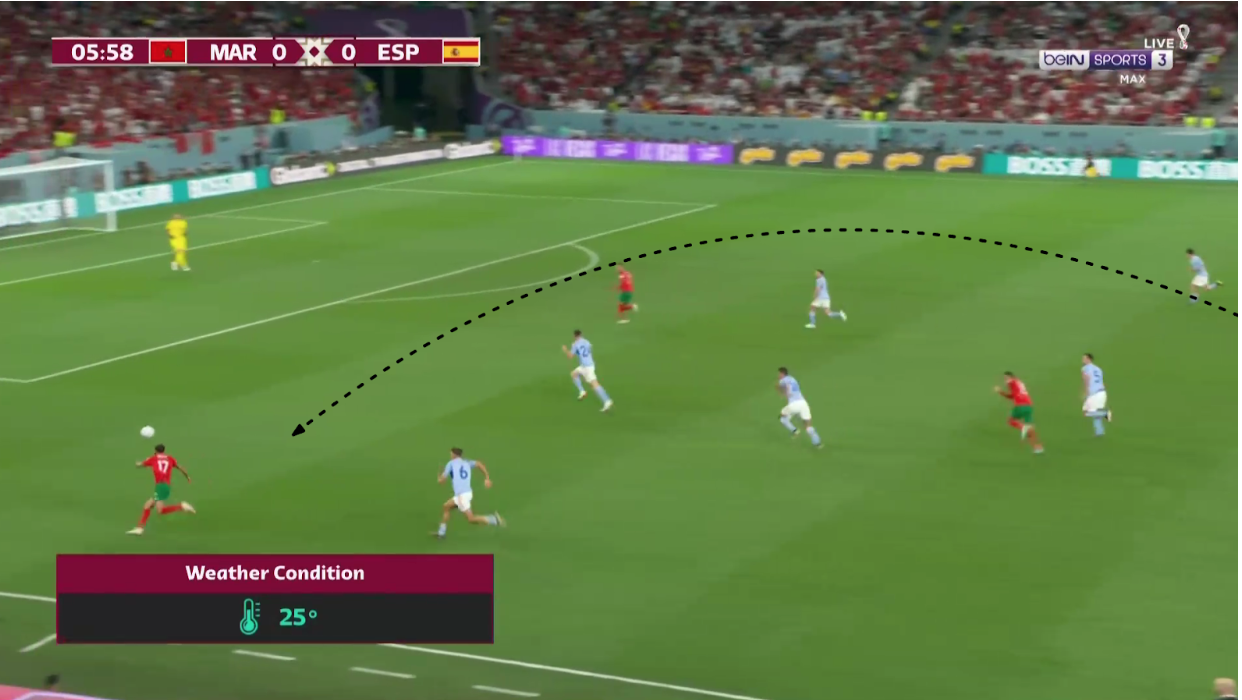
Morocco’s Attacking Transitions
After the attacks of Spain are destroyed and the ball is cut, especially from Ounahi and Amrabat, the transition is quickly on the side of Ziyech and Hakimi playing in the space in the back of Alba, but the matter was not done perfectly, especially with the misunderstanding of Ziyech and Hakimi.
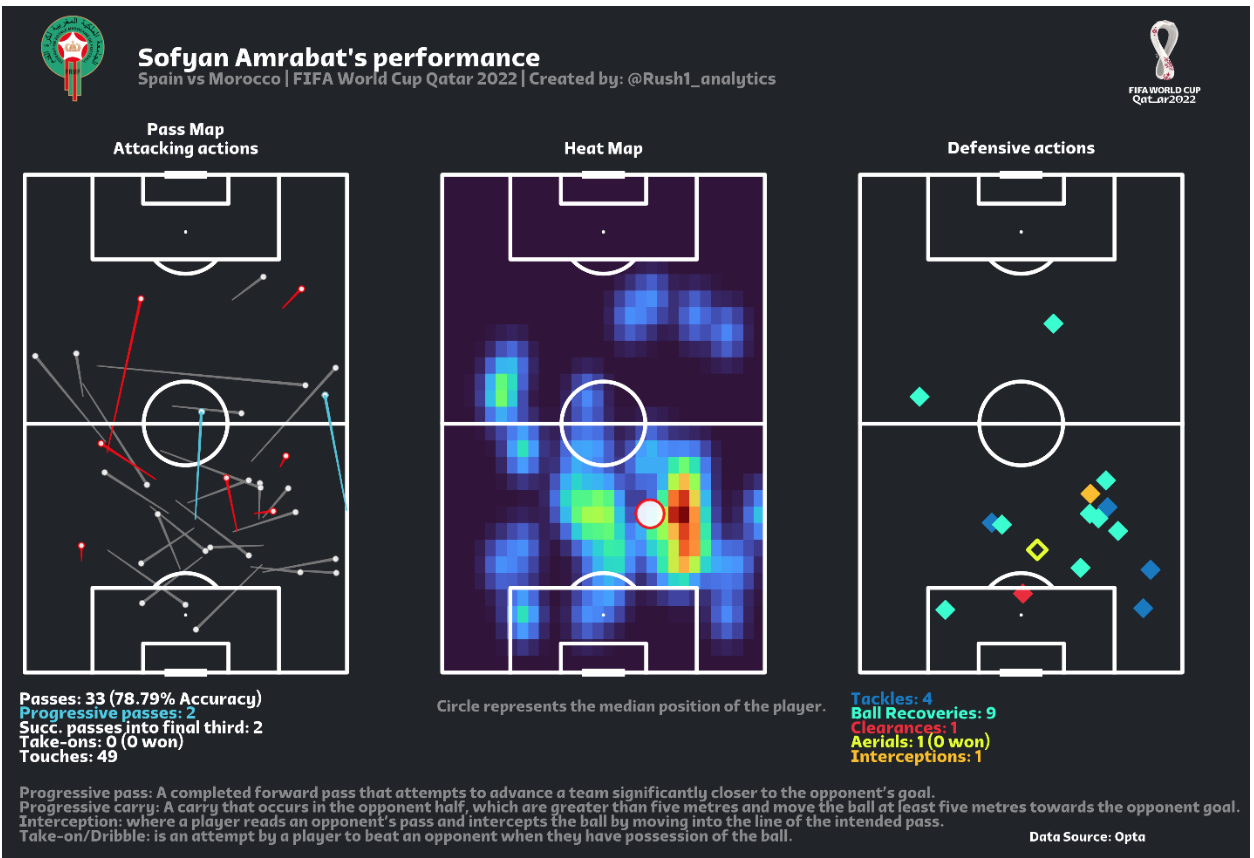
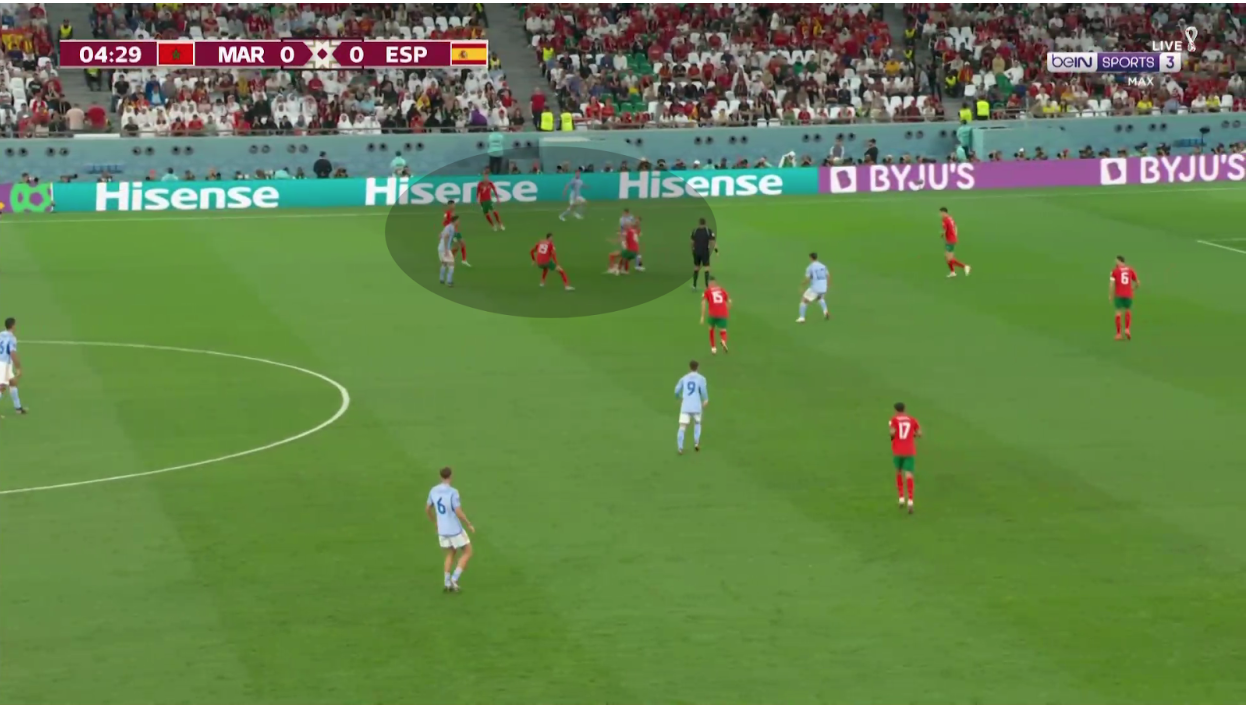
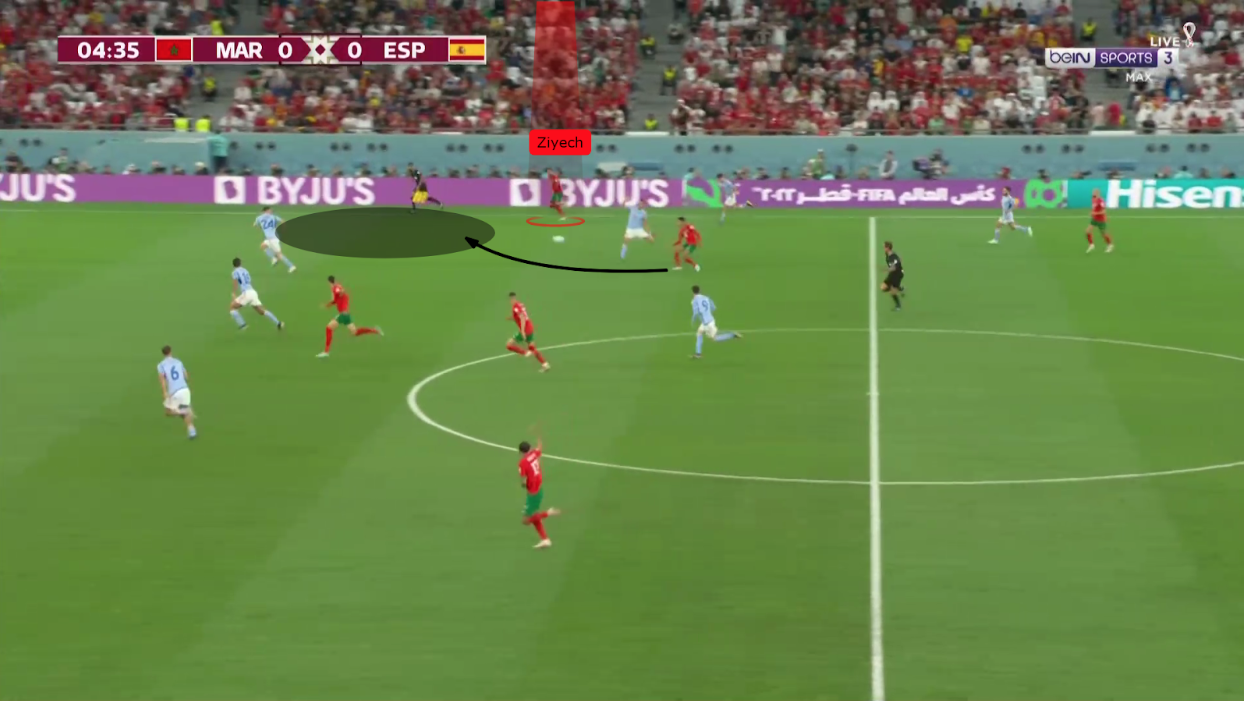
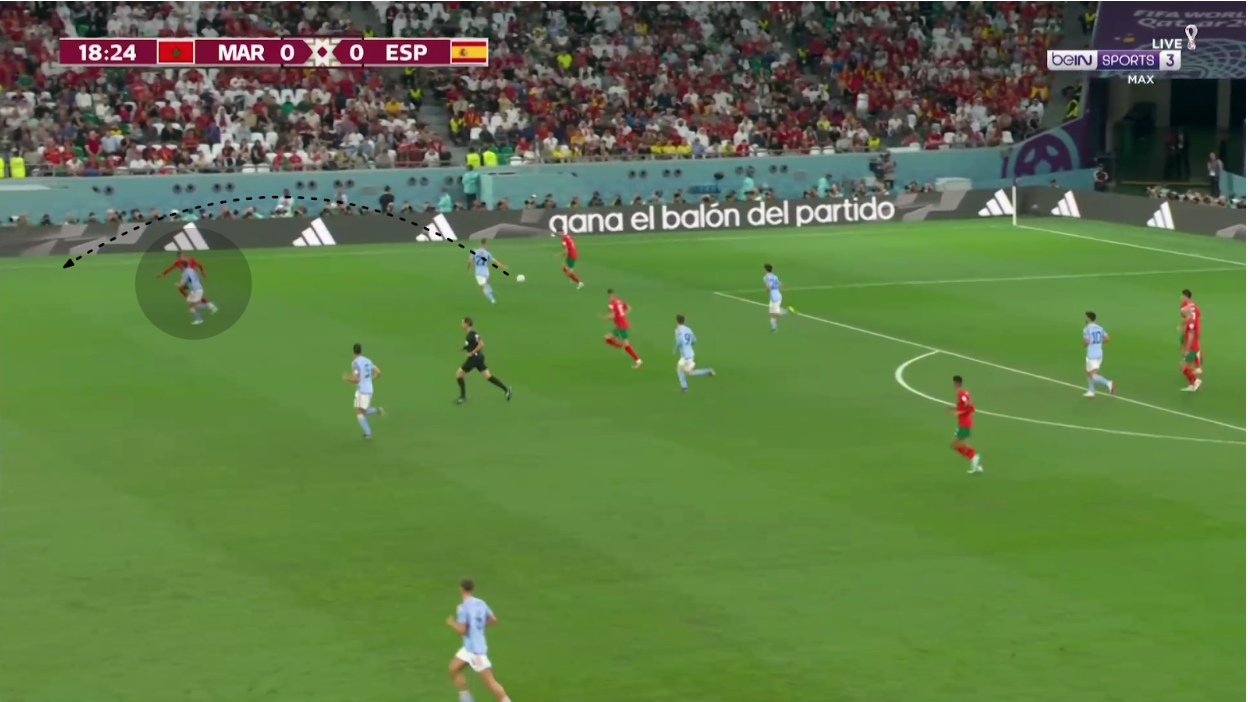
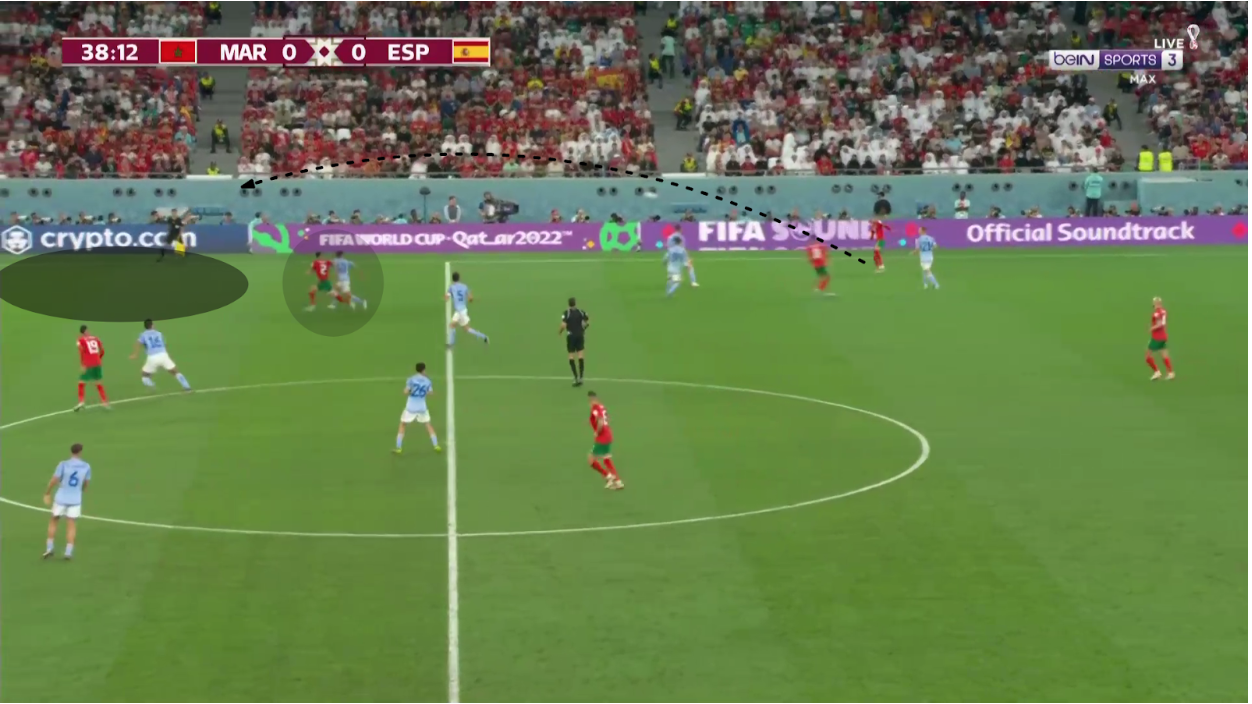
Another pattern for Morocco through Boufal and the 1v1 situation and dribbling forward in the space or switch play with a long pass to Ziyech after passing the pressure of Llorente and Gavi.
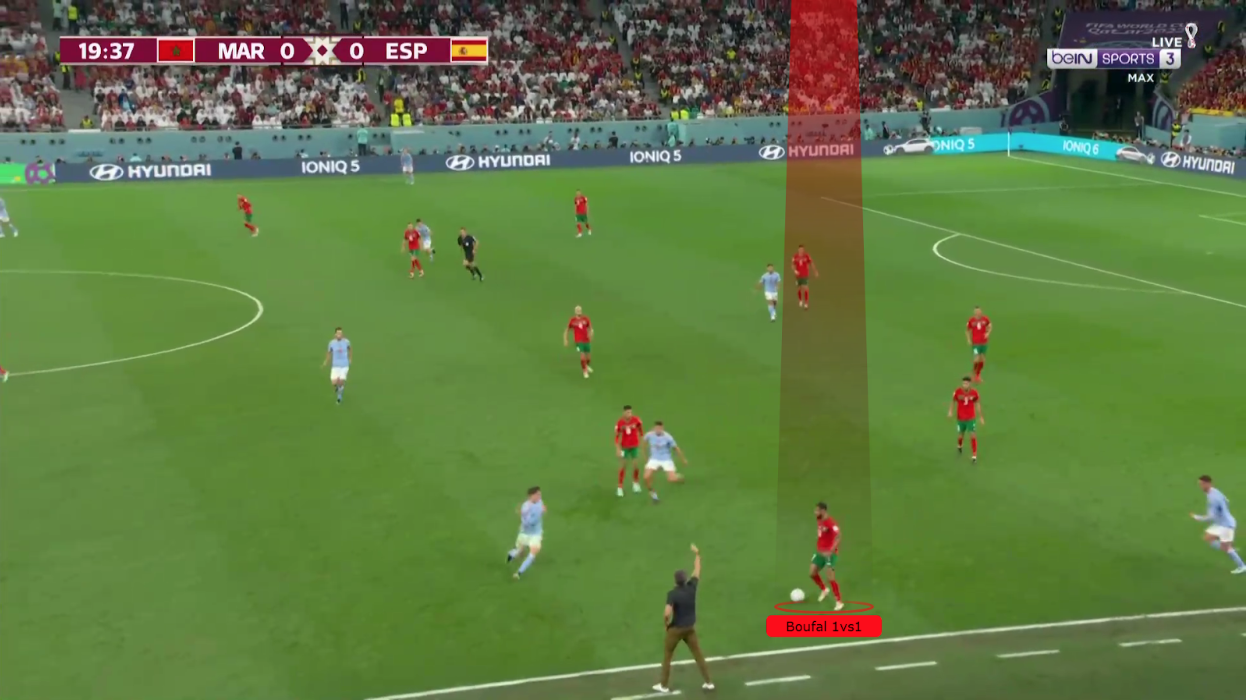
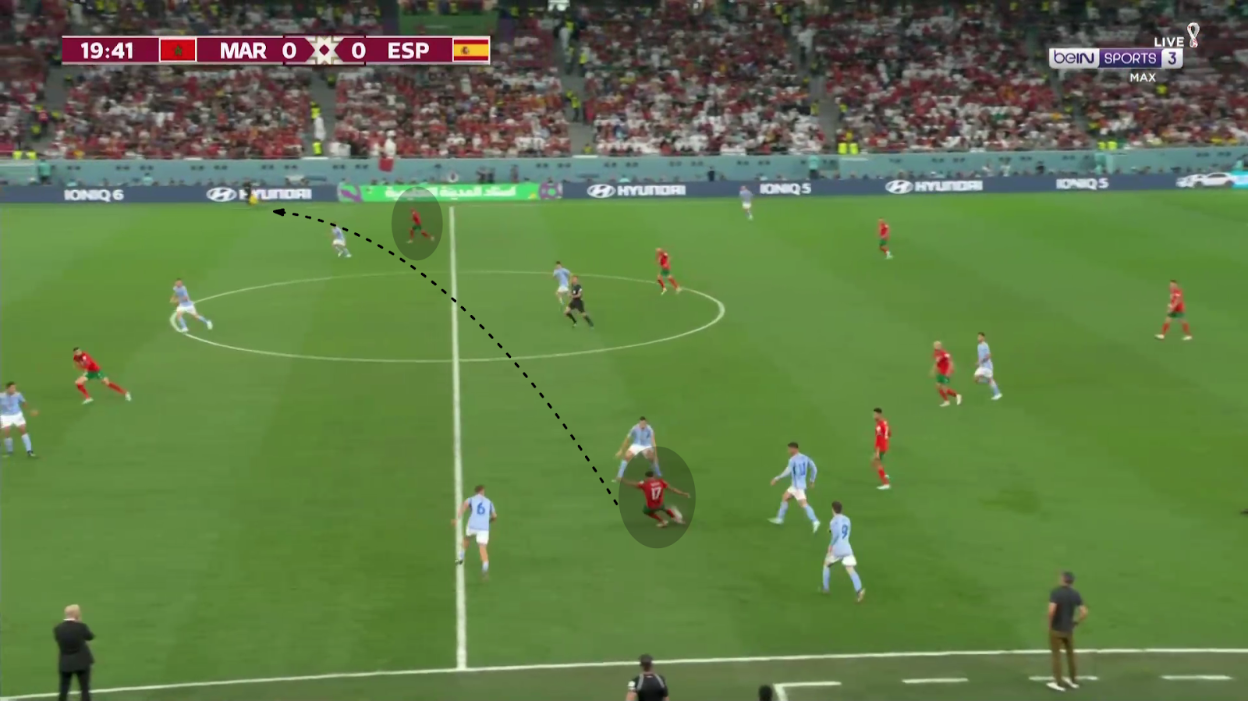
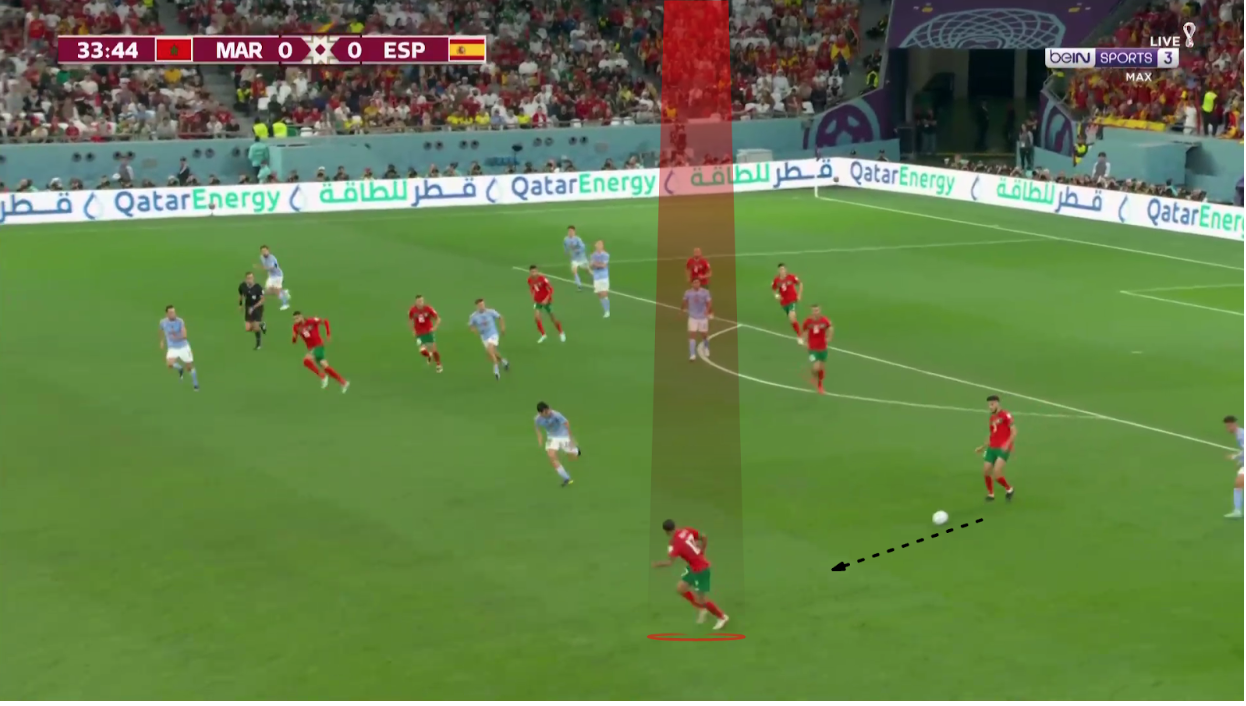
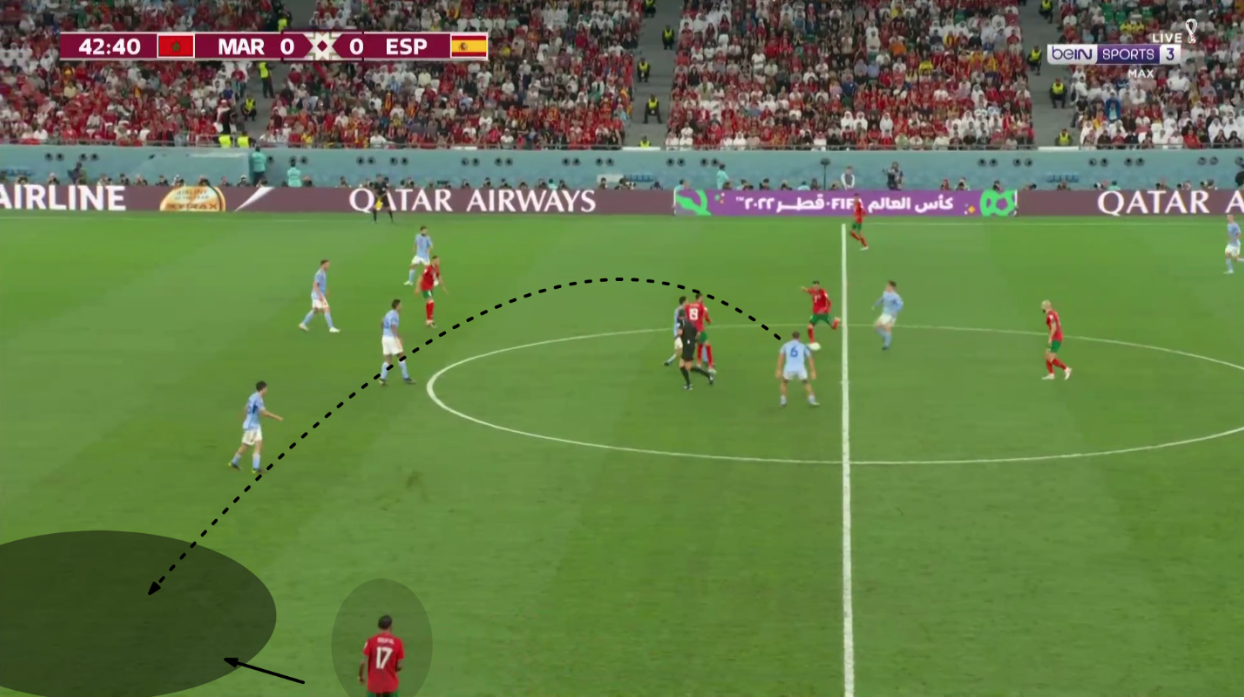
Conclusion
12 years since winning the World Cup Final against the Netherlands, Spain have yet to win a single World Cup knockout match, with La Roja suffering a second straight penalty shootout elimination in the Round of 16 which resulted in Luis Enrique being replaced by Luis de la Fuente as Spain manager. Morocco, meanwhile, have become the fourth African team to reach a World Cup quarterfinal after Cameroon ’90, Senegal ’02 and Ghana ’10, and they’ll be looking to beat Portugal and become the first African side to reach the semifinals.
By: Mohammad Bani Atta / @TacticalZone14
Data by: Yahia Rashwan / @Rush1_analytics
Featured Image: @GabFoligno / Emilio Andreoli – UEFA
